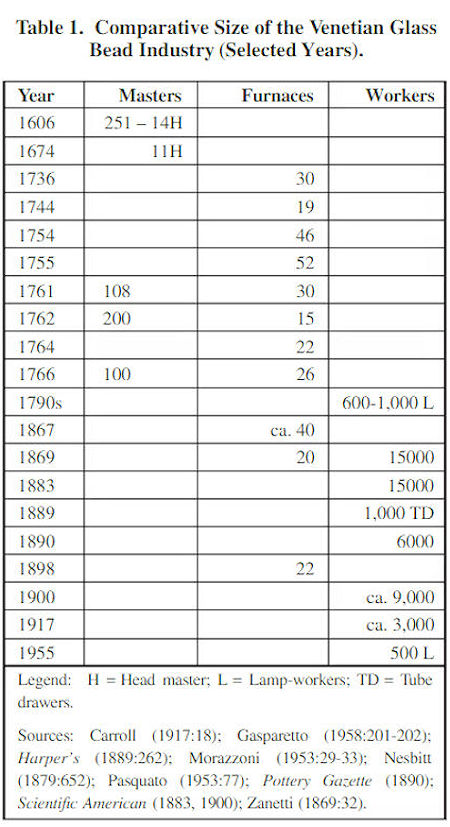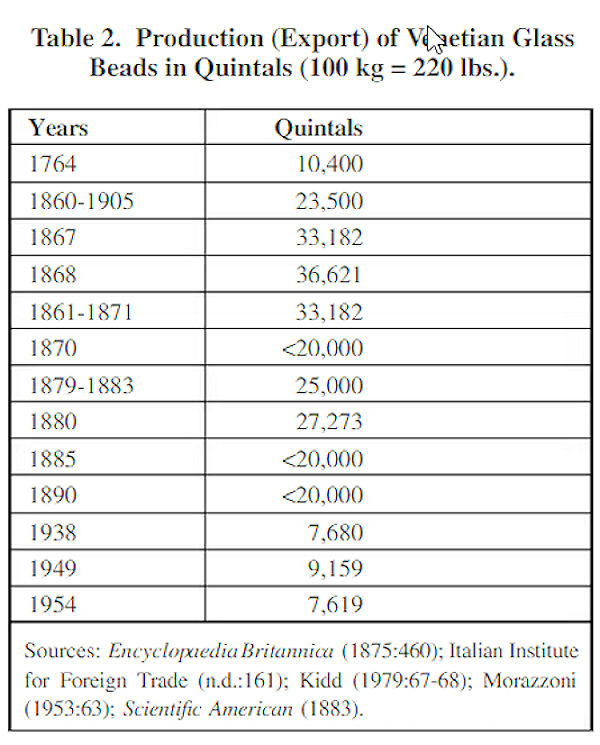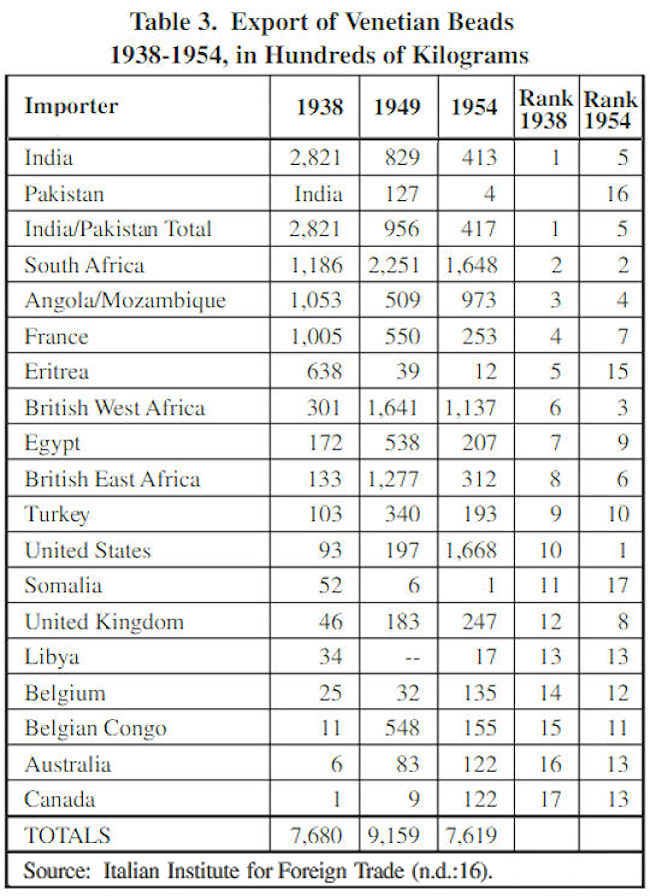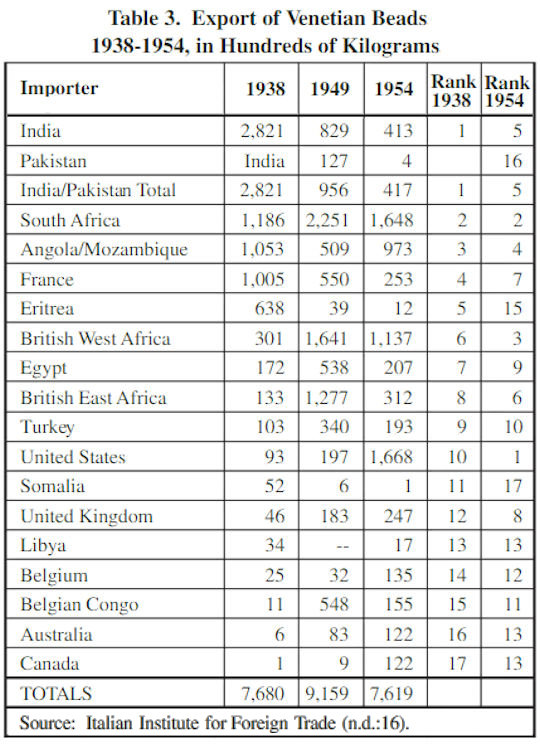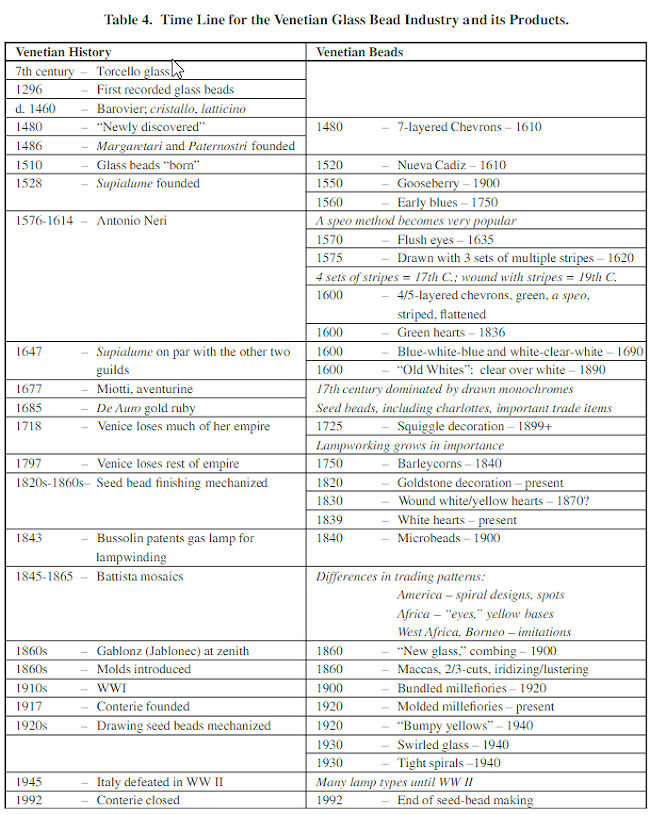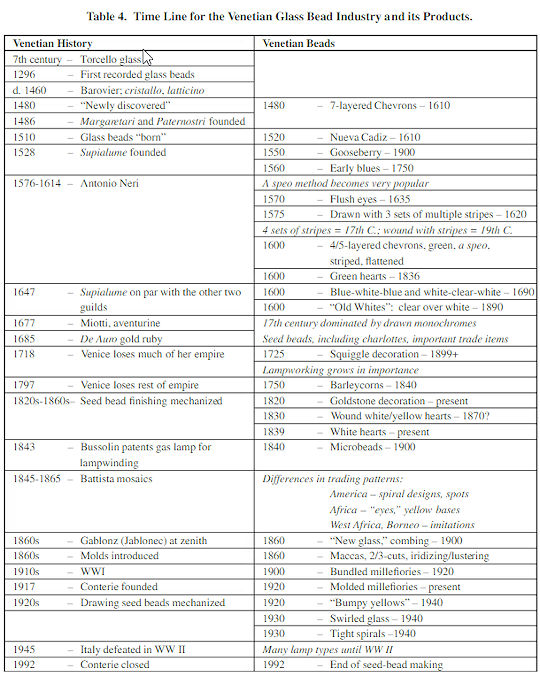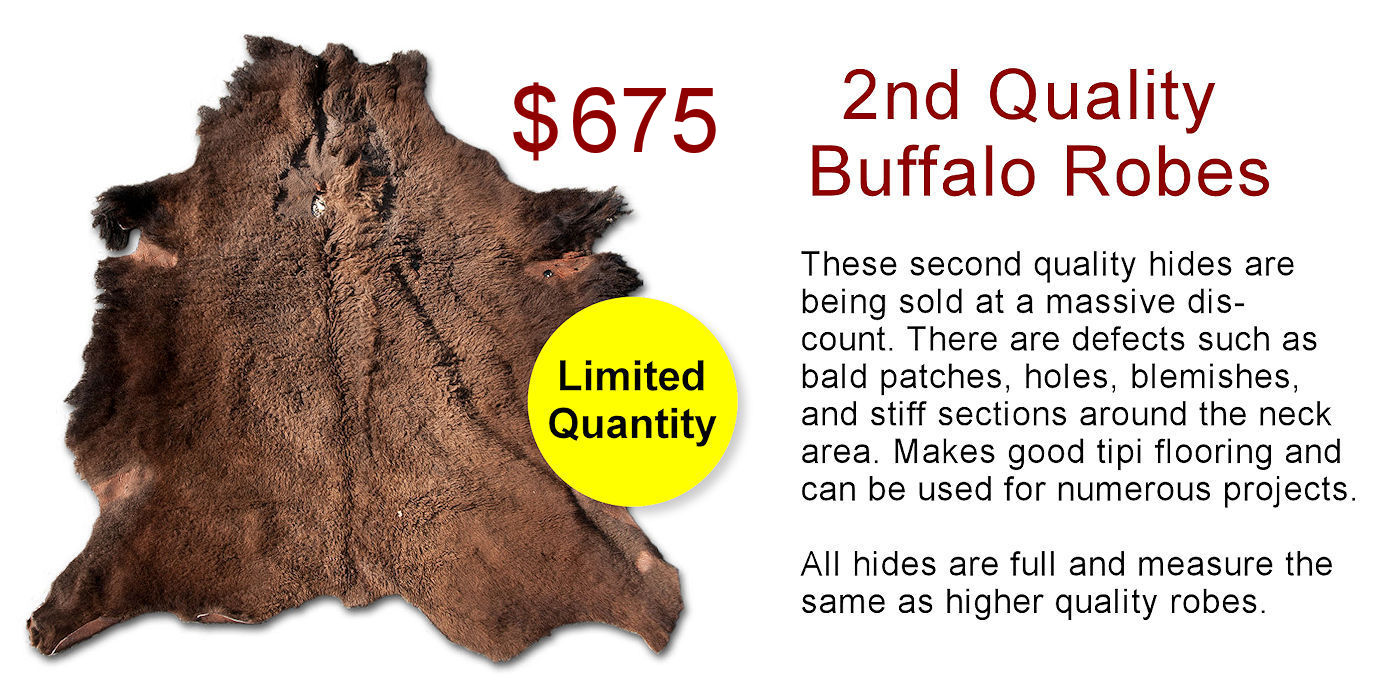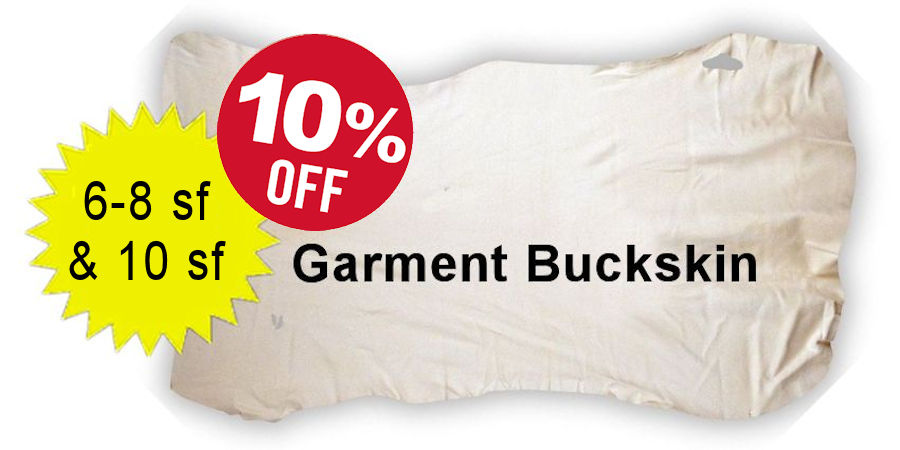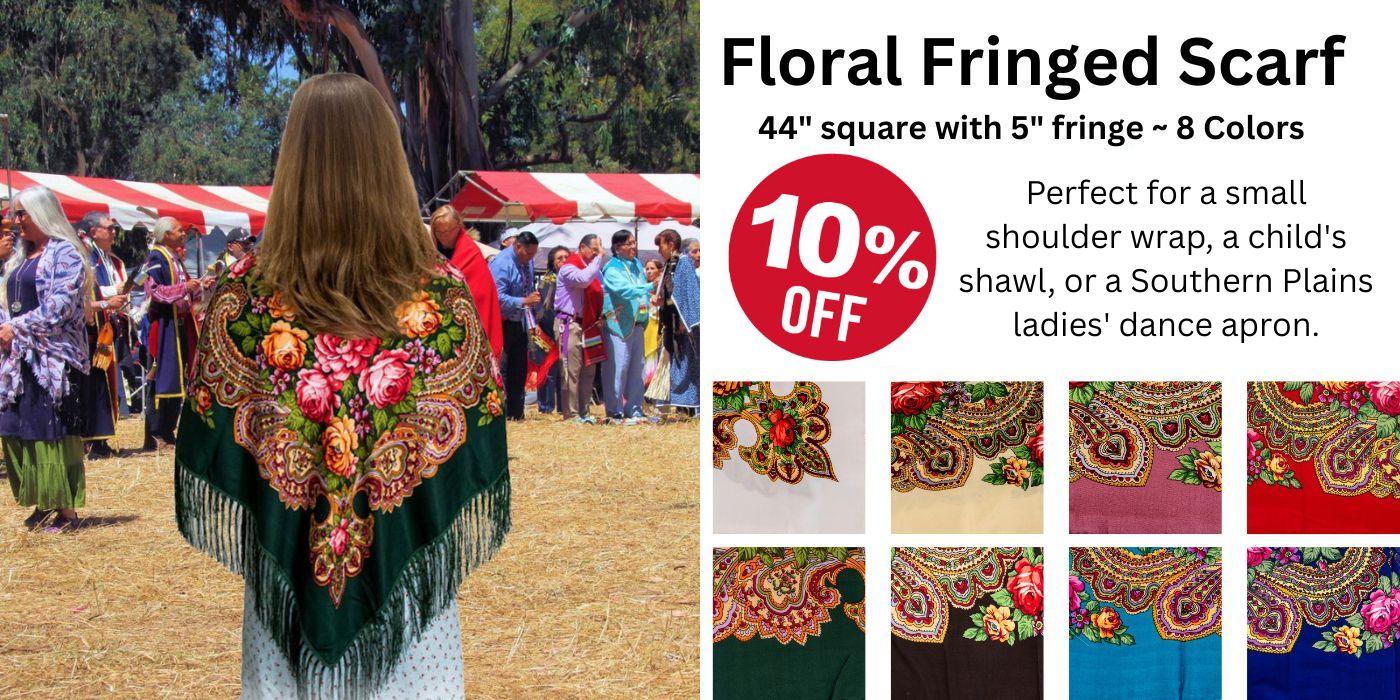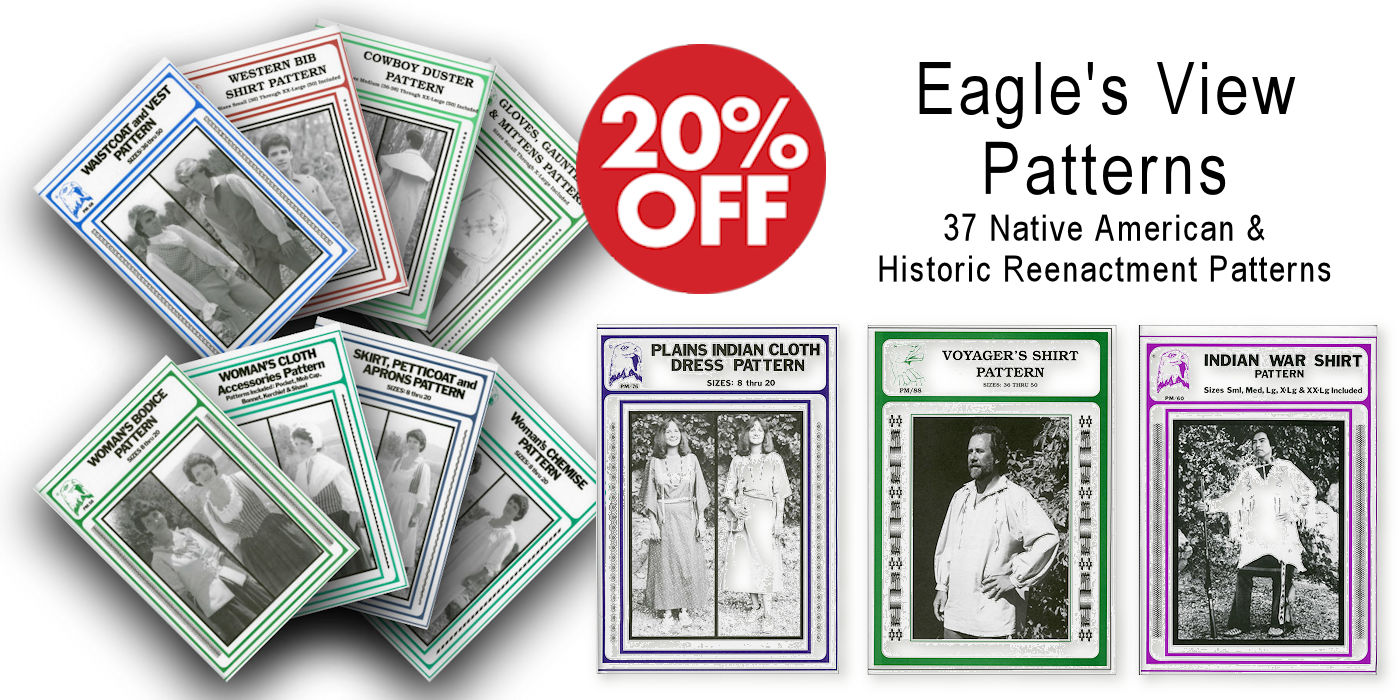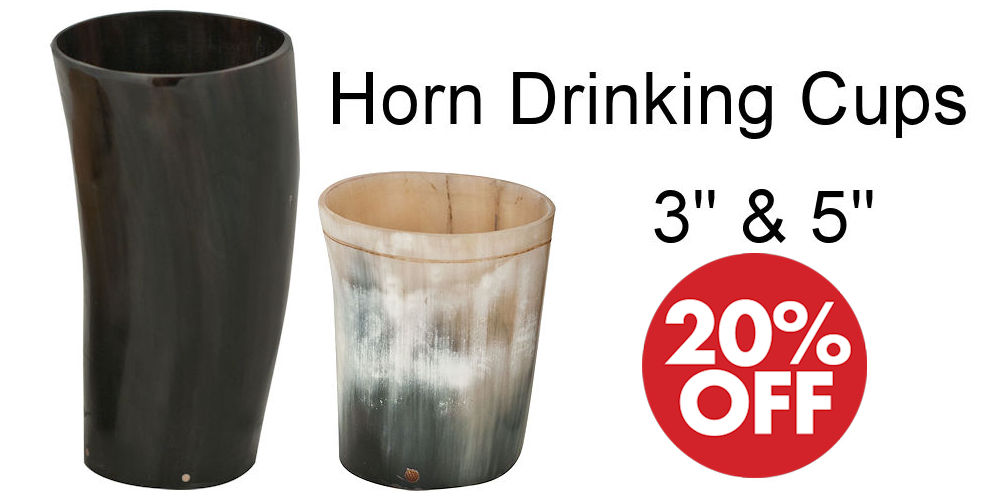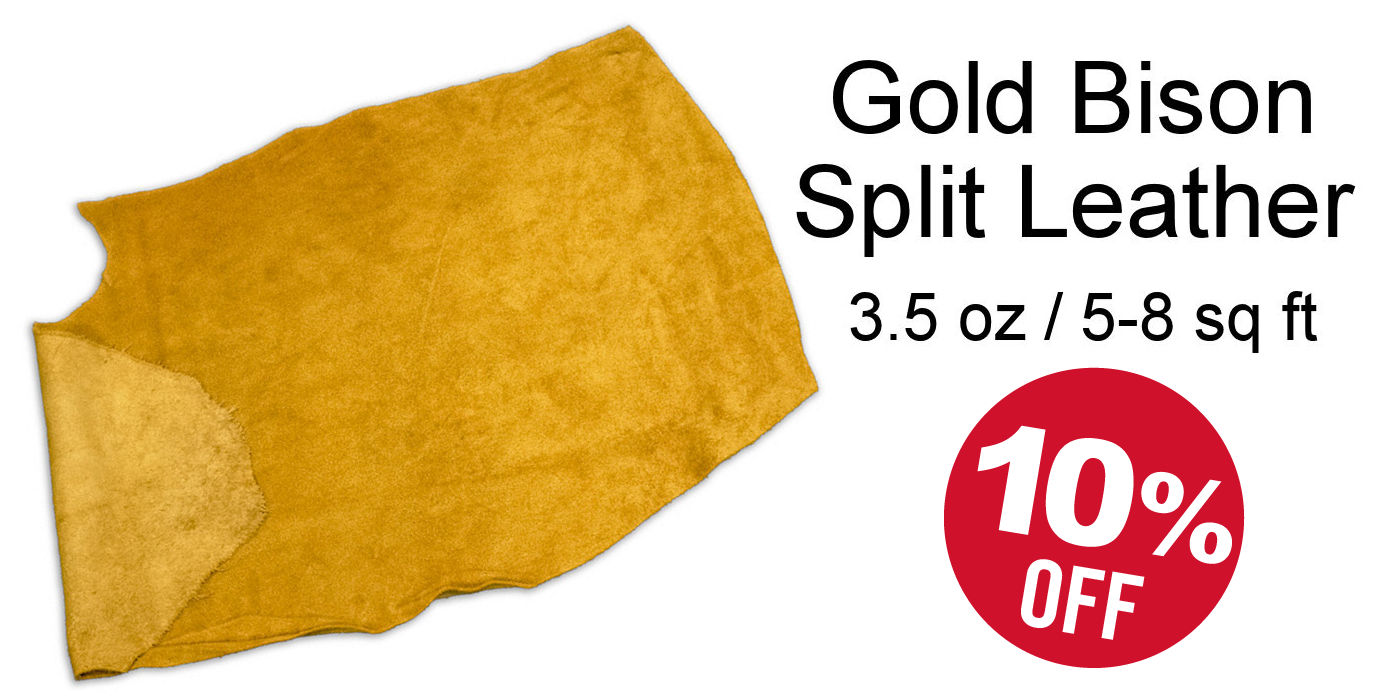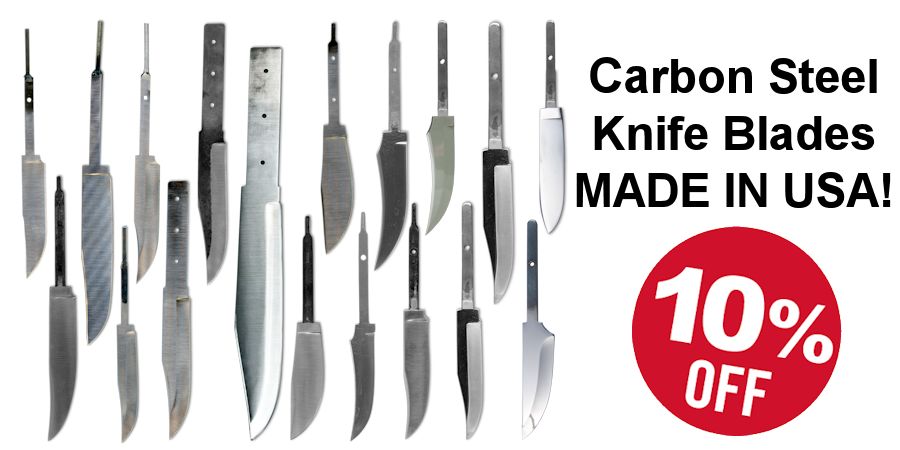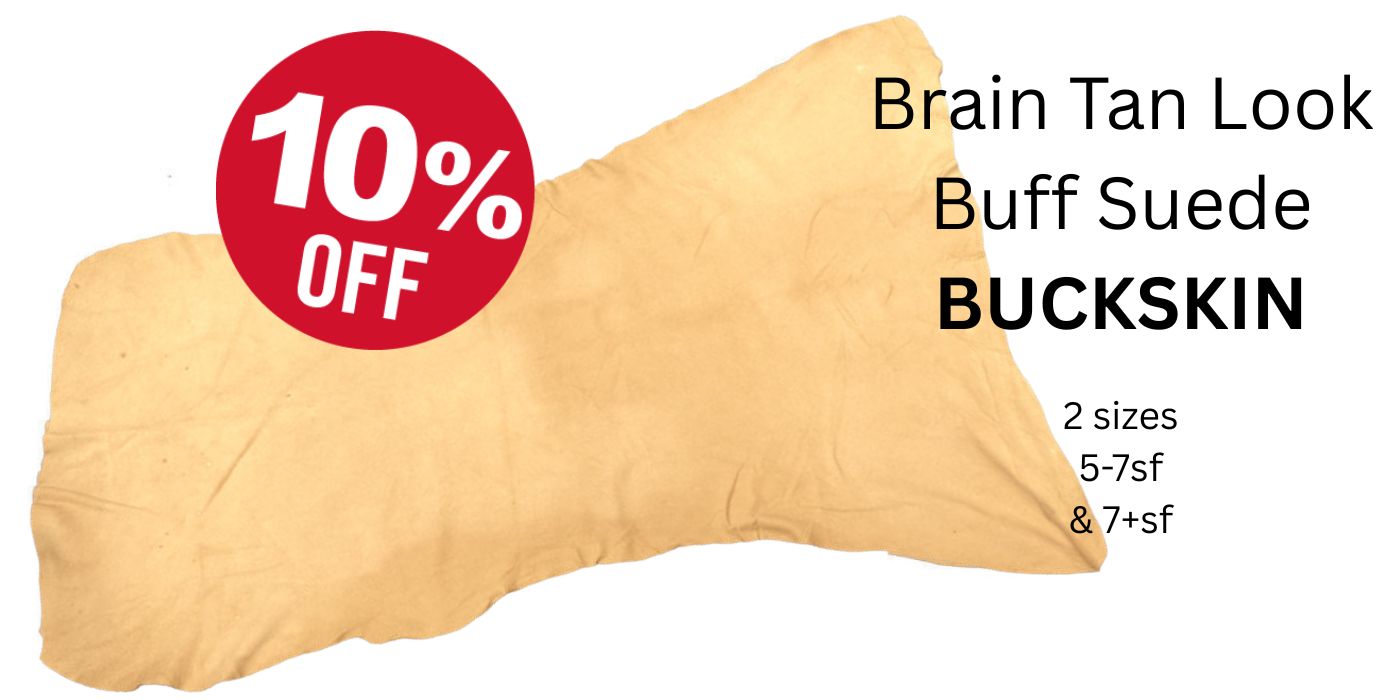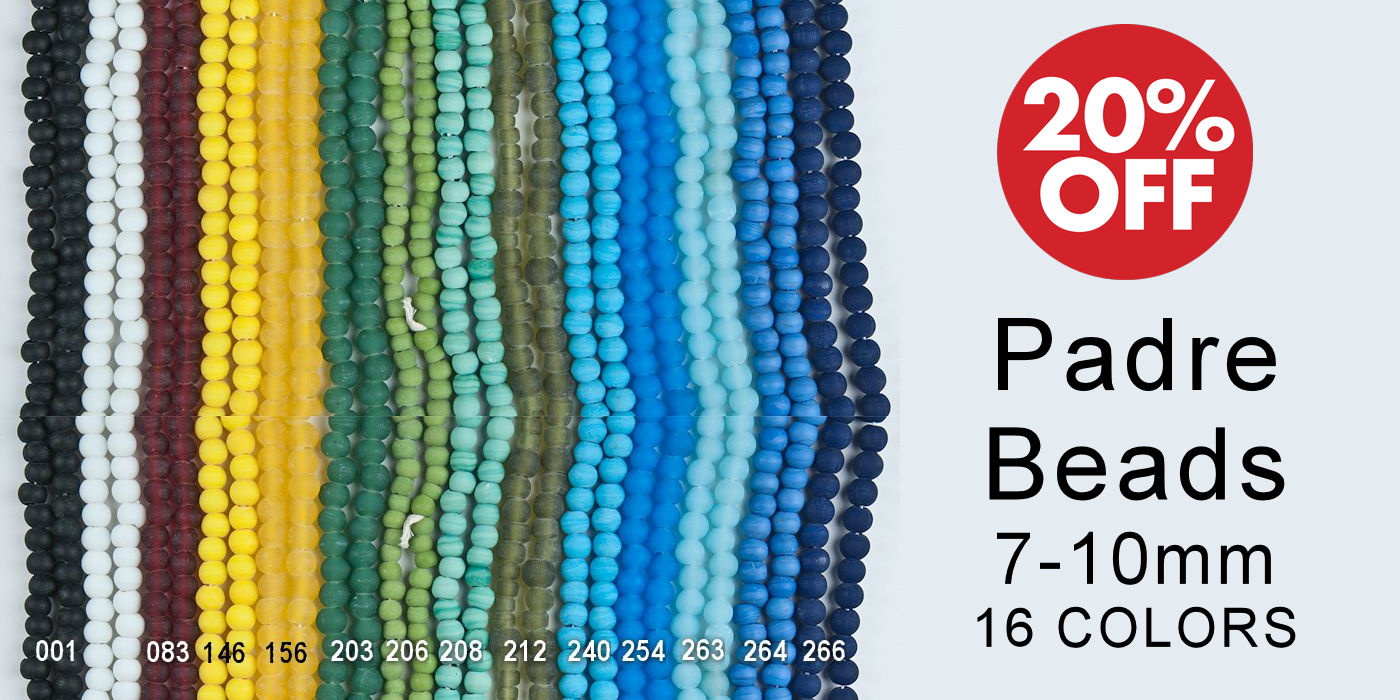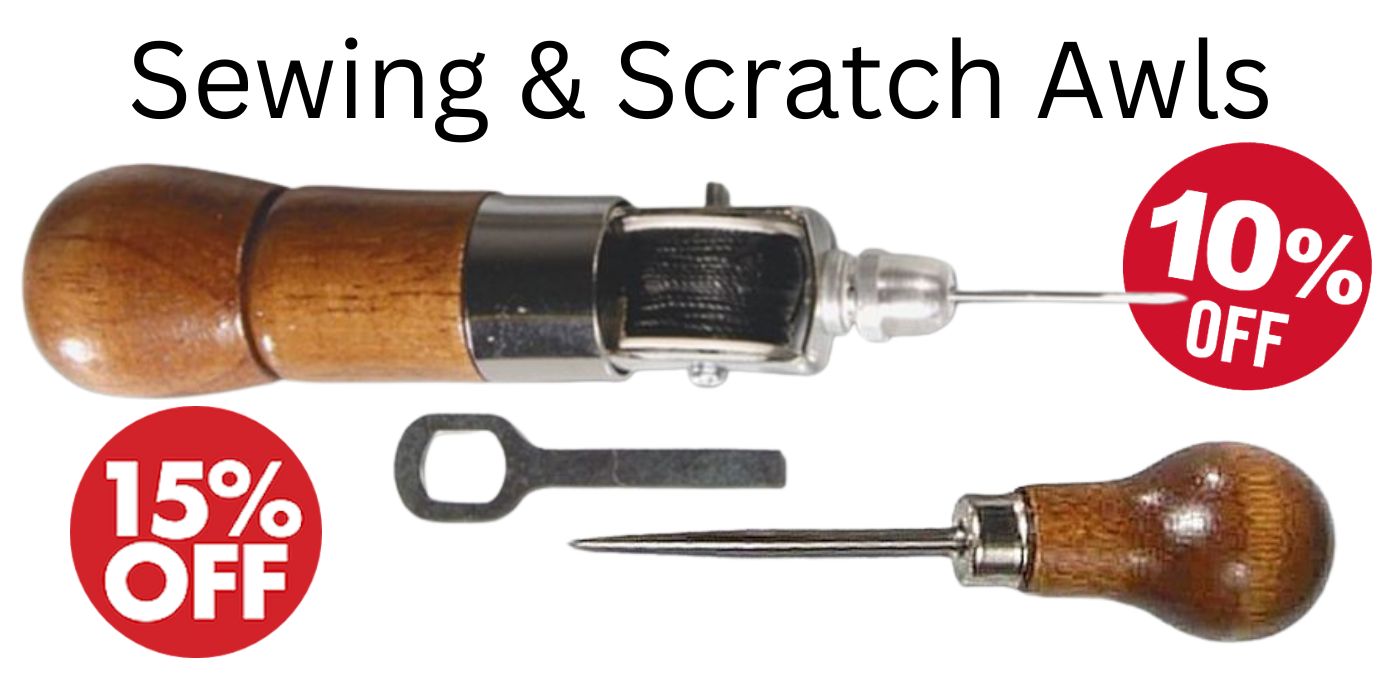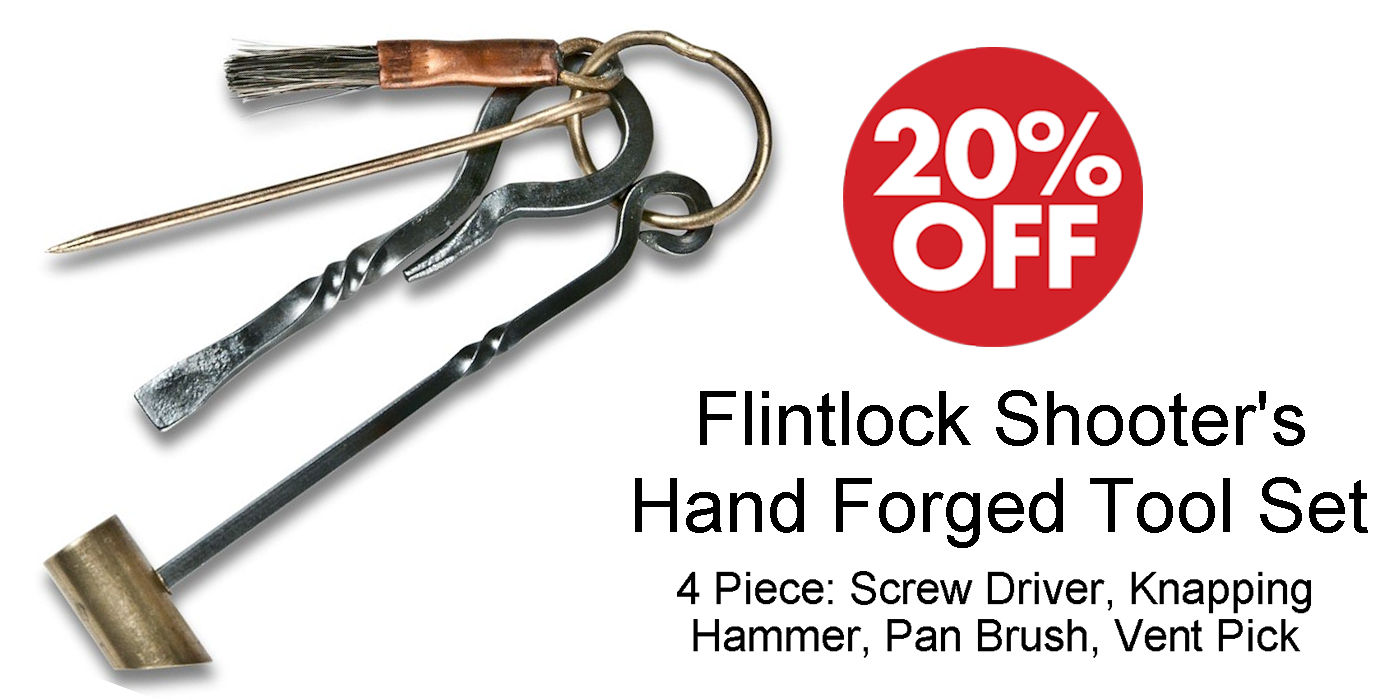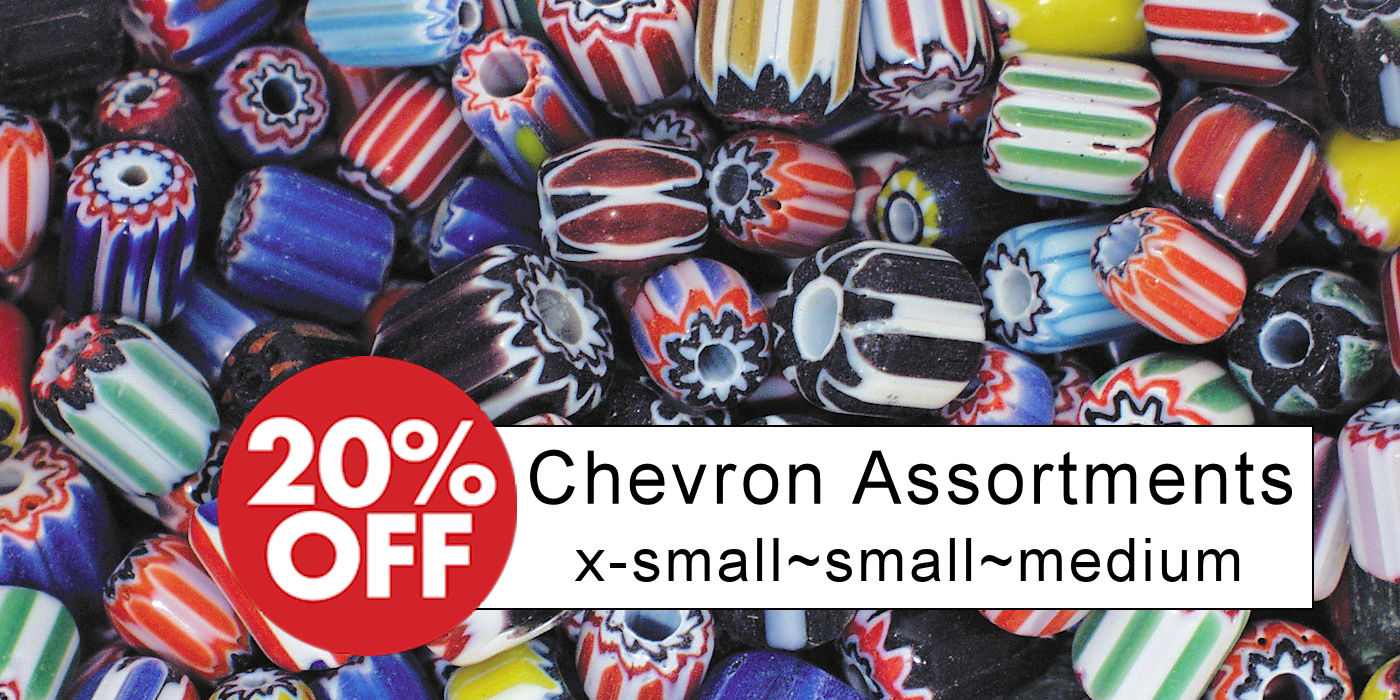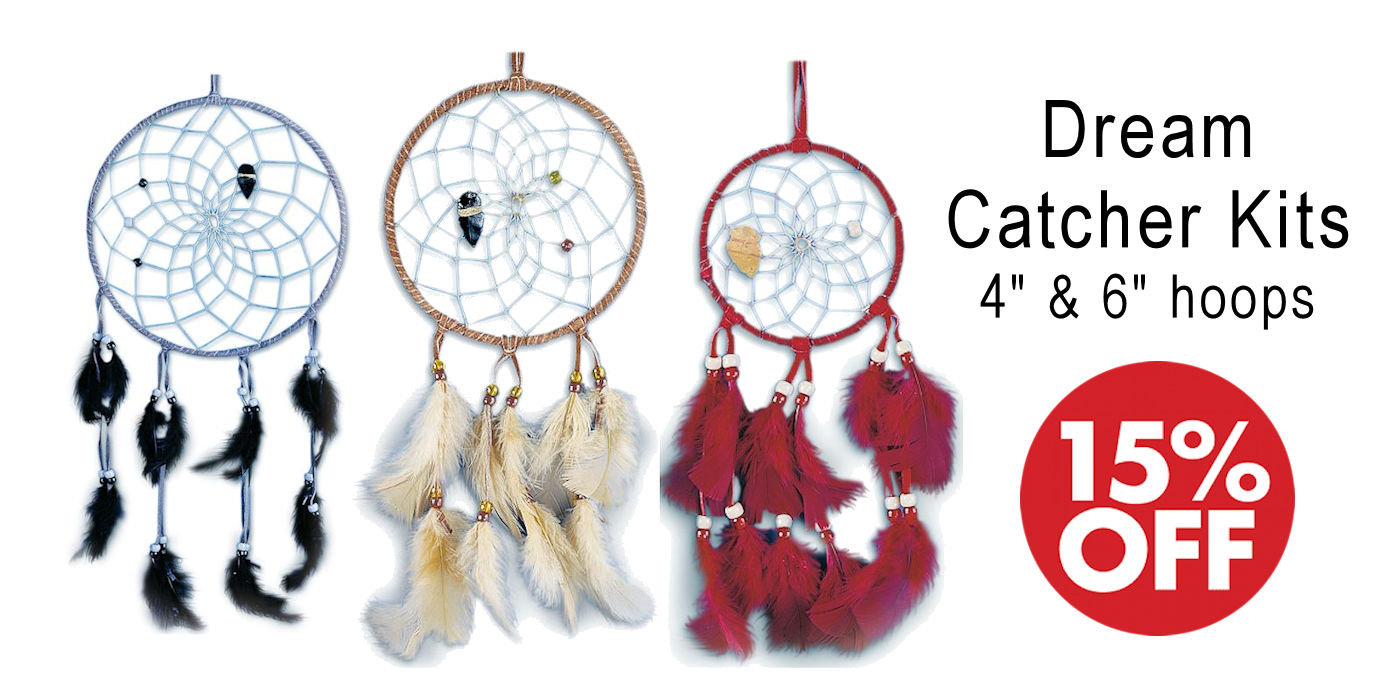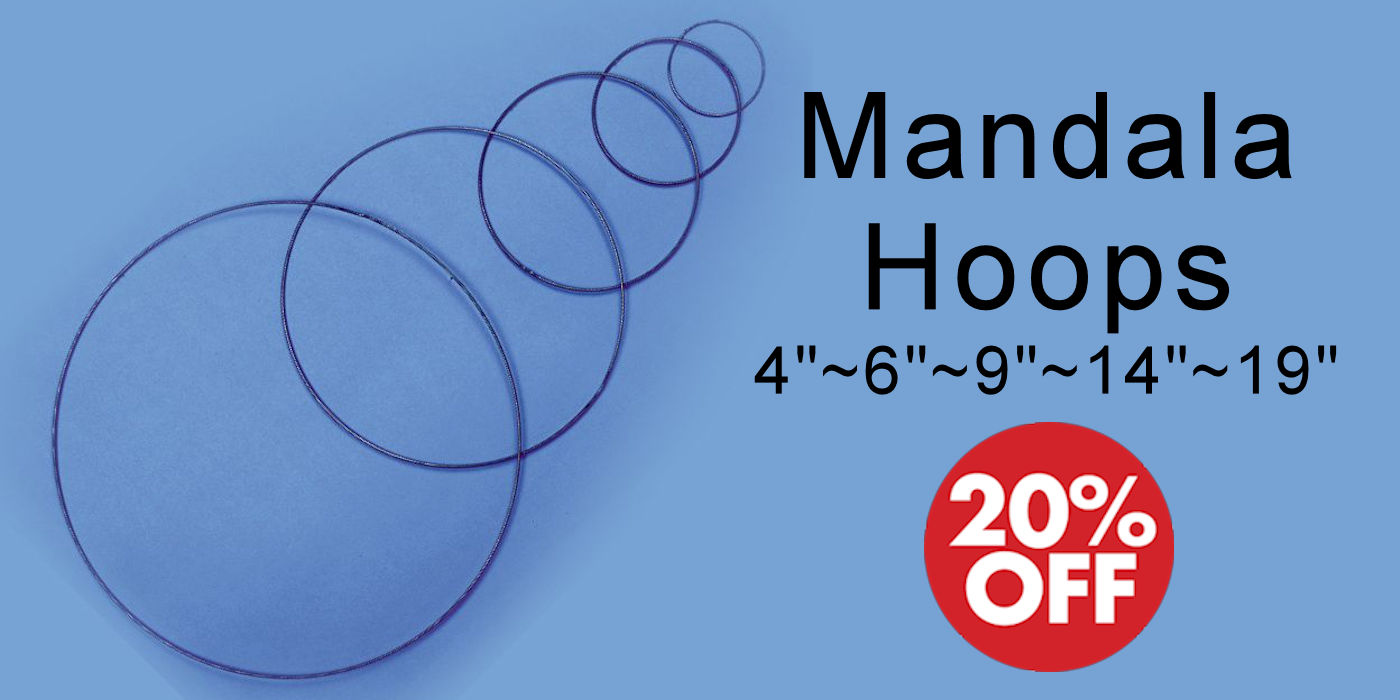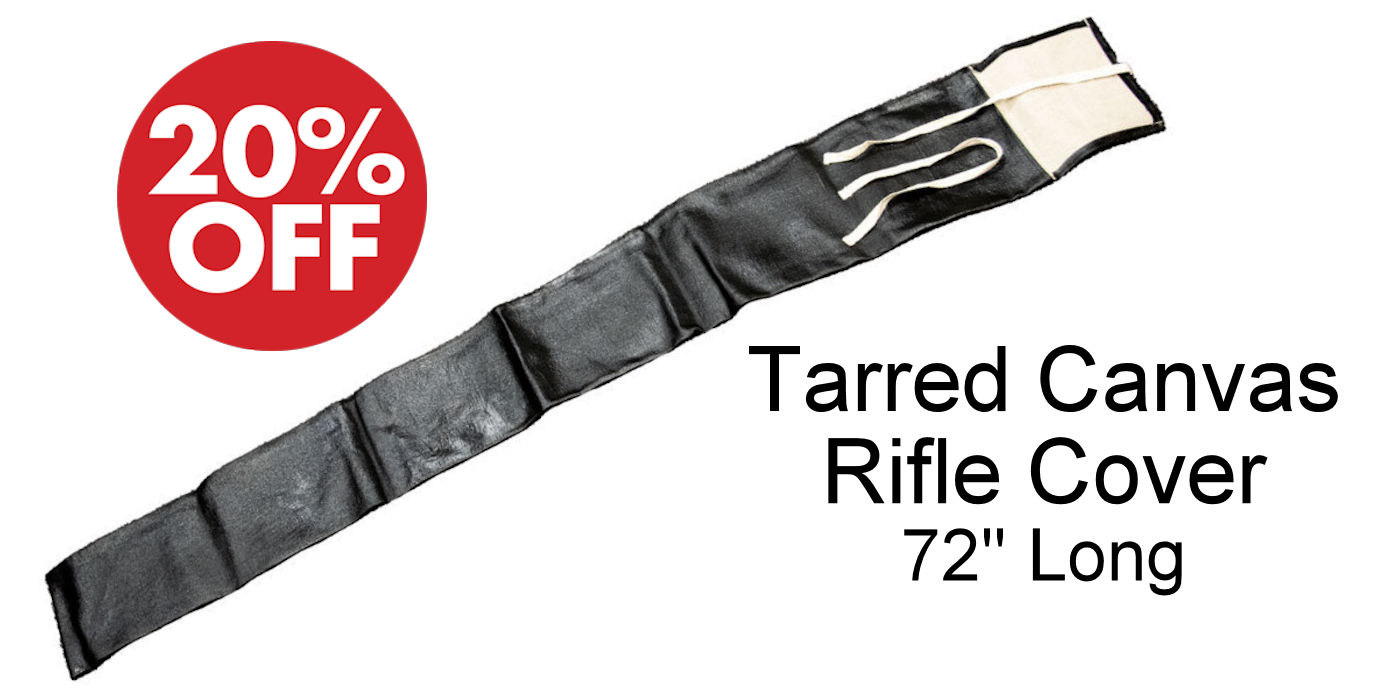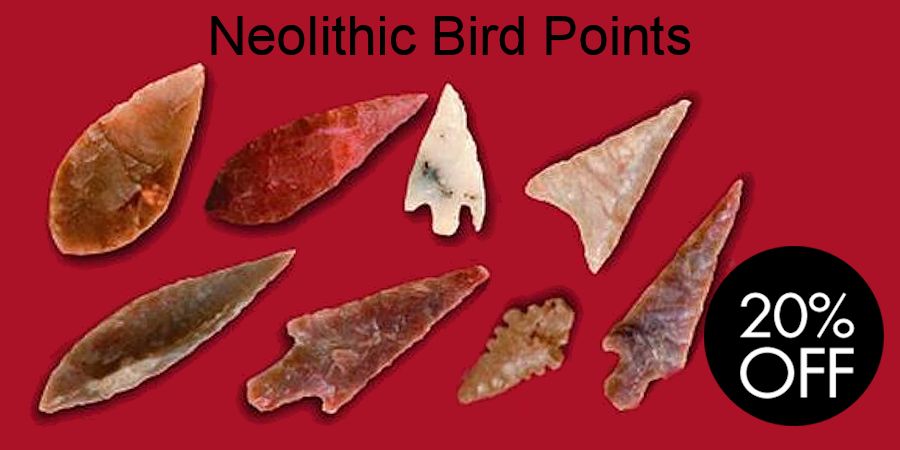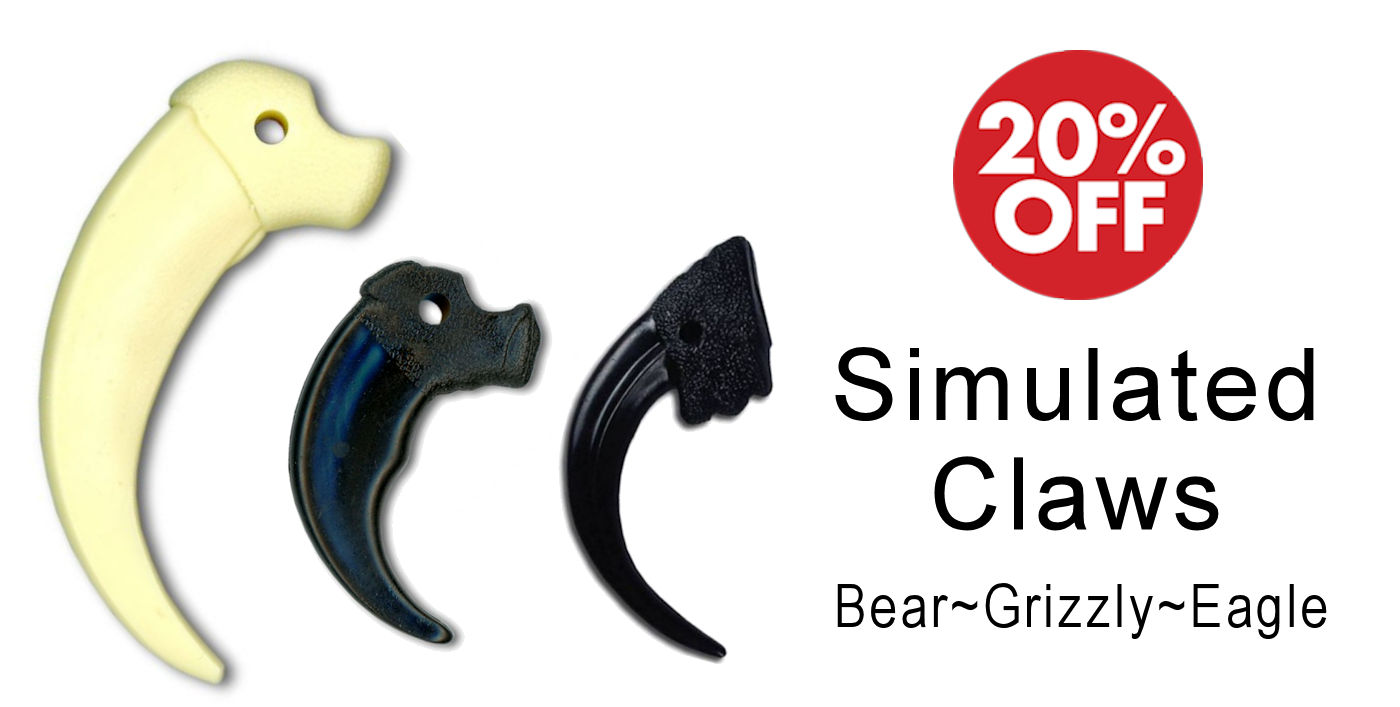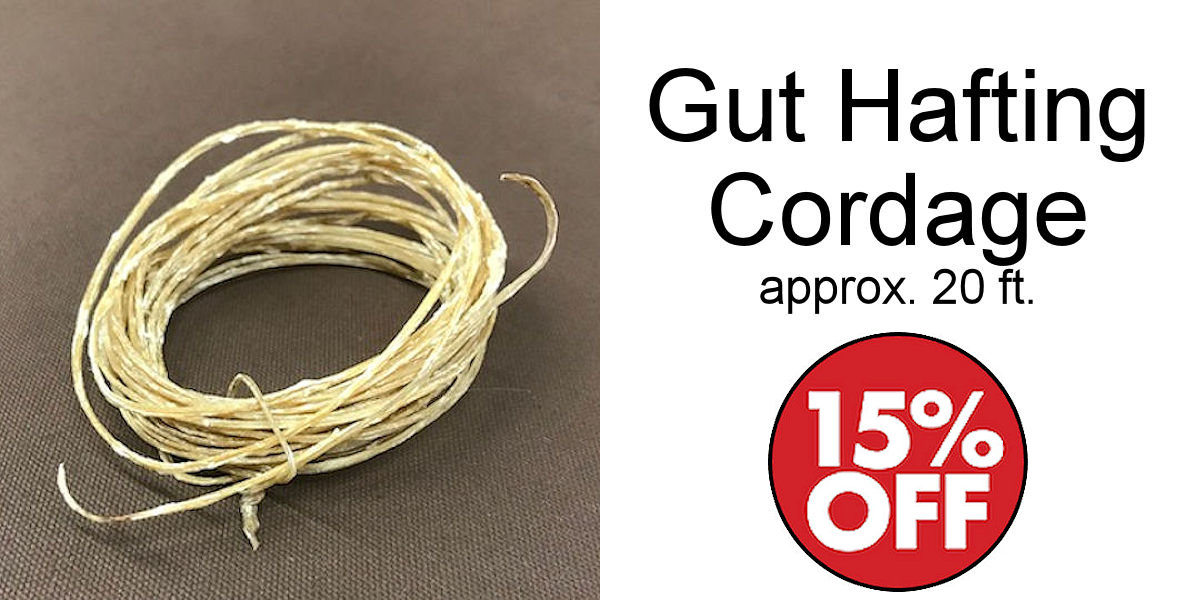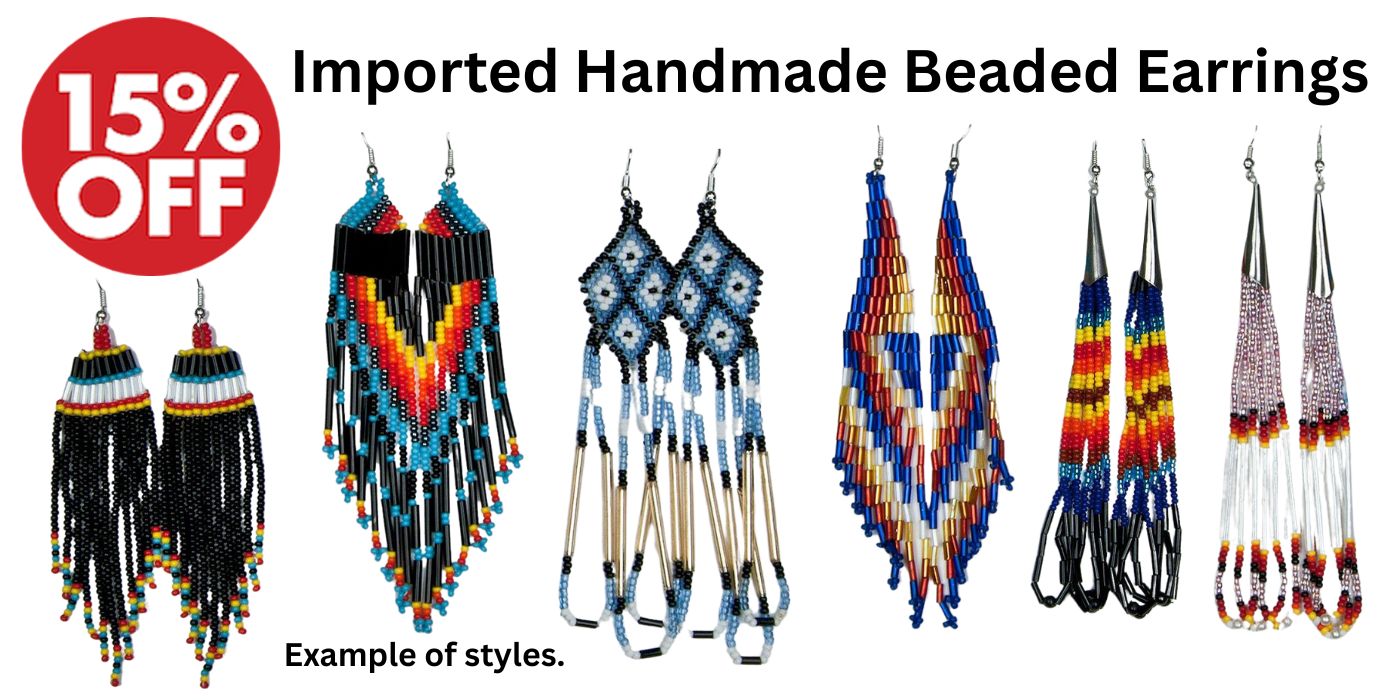

The Venetian Bead Story
By Peter Francis, Jr
Above Photo Credit: McCord Museum, CC BY 4.0, via Wikimedia Commons
The Venetian Bead Story
By Peter Francis, Jr
Above Photo Credit: McCord Museum, CC BY 4.0,
via Wikimedia Commons
With the possible exception of the Egyptian and Syrian beadmakers of Roman times, no glass bead producers have had as much influence on their contemporaries as those of Venice. Venetian beads have been sent all over the world and have for the last several centuries dominated the trade and tastes in the commodity. These beautiful products of Venice come in an amazing diversity of styles. It has been estimated that well over 100,000 different Venetian bead varieties have been produced and each year the numbers grow, for Venetian artisans are constantly turning out new kinds of beads for their customers. This article summarizes the history of the Venetian bead industry and also discusses its diverse products.
Crazy Crow Trading Post pleased to present this 17 page article in its entirety. Peter Francis, Jr. (1945-2002), was a world-renowned bead scholar who was dubbed by the New York Times as the “world’s leading authority on beads.” Read this article and we think you’ll know why they titled him so.
PART I: HISTORY
One of the world’s most exquisite cities, Venice consists of 117 islands in the Lagoon of Venice, sheltered from the Adriatic Sea by the Lido, a long sand spit. Her wealth has always come from the sea.
Several theories of the origin of glassmaking at Venice exist, but none are proven. In the 7th and 8th centuries, small furnaces on Torcello Island made tableware and tiles for the cathedral (Gasparetto 1967; Tabaczyska 1968). Tradition says that in A.D. 811, people of the Lido fled the Huns to Rivo Alto (Rialto), the “high bank,” thus founding Venice. Radiocarbon dates from materials beneath San Lorenzo are, however, from the late 6th and early 7th centuries and those from beneath San Marco are from the 7th or 8th century (Ammerman et al. 1995). In 823, St. Mark’s bones were brought from Alexandria and Venice began to eclipse Torcello.
Documents from A.D. 982, 1082, and 1090 refer to philolarii or bottle makers attached to Benedictine monasteries; they also made mosaic tiles to decorate San Marco cathedral (Gasparetto 1960:37). In 1072, alum was imported from Alexandria to make glass; this was forbidden in 1330, as it resulted in an inferior product (Perrot 1958:11). In 1224, 29 members of the Ars Fiolaria, the glassmaker’s guild, were fined for various rule infractions (Nesbitt 1879:652), the first mention of the guild.
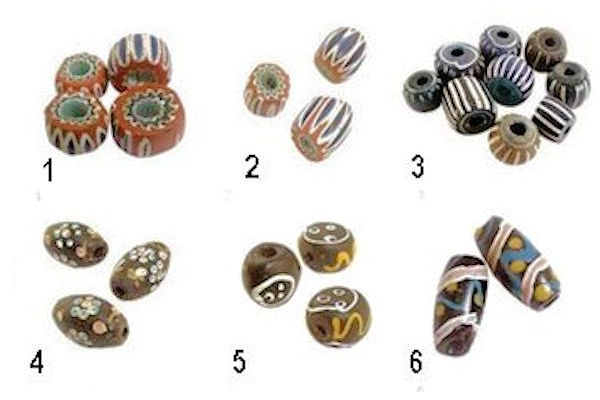
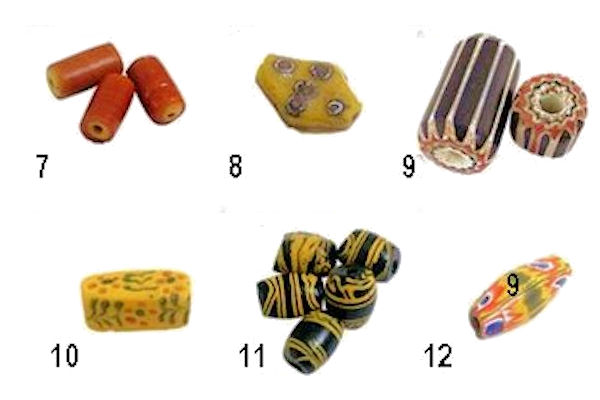
Trade Beads Through the Ages: 1. Seven Layer Chevron Bead. Late 1400s 2. Seven Layer Chevron Bead. Late 1400s 3. A Speo Bead. Late 1600s 4. French Ambassador Bead 1850s 5. Baule Face Bead. Late 1800s 6. Black Decorated Bead. Late 1800s 7. Cornaline D’Aleppo Bead. Late 1700s 8. Tabular Bead. Late 1800s 9. Large Chevron Bead. Late 1800s 10. Square Edge Floral Bead Late 1800s 11. Yellow Black Swirl Bird. Late 1800s 12. Millefiori Bead. Late 1800s
In those days of state control of industry, many laws were passed governing glassmaking. An edict in 1275 barred the export of sand, potash, or broken glass and restricted Germans from taking more glass than they could carry on their backs or ten Venetian-lire worth. An edict of 1286 by the Grand Council set down minimum working conditions and ordered the furnaces shut when the weather was hot. In the next year, wood for fuel was put under the direction of the senior judges to ensure its availability (Perrot 1958:10-11).
On 8 November 1291, the Senate decreed that glassmaking must move from Rialto to the island complex of Murano (ancient Amurianas or Amurianum). The official reason was to shield the wooden buildings of Venice from fire, but it also helped to control the industry and prevent glassmakers from leaving. The law was not always obeyed; two similar laws were passed in the next 30 years and there was still a glassmaker in Rialto in the late 14th century (Hazlitt 1915:705).
Murano was a draw. By 1350, at least 60 glassmakers from the Dalmatian Coast and Italy went there, many apparently from the Diaspora (Kurinsky 1991:382-383). Venice favored glassmakers. An immigrant could become a citizen in 25 years (Kurinsky 1991:382-383). A 1376 law allowed the heirs of a glassmaker’s daughter and a nobleman to inherit his title and in 1490 the guild was placed under the Council of Ten, enhancing its lobbying power (Perrot 1958:21). Glassmakers could even buy a title, as the Morellis did in 1686 for 100,000 ducats (Gasparetto 1958:189).
Venice attempted to prevent an exodus of glassmakers, for a while under penalty of death. This did not stop many from leaving, however, and the penalty was applied only twice (Kidd 1979:22). Many European powers encouraged glassmakers and beadmakers, foremost among them France (Scoville 1950:82-83).
As early as 1486, Venetians set up a bead factory in Bohemia (Jackson 1927). In the 16th century, Venetian glassmakers went to France (Morazzoni 1953:41), England (Thorpe 1935:120; Winbolt 1933:511), and Holland (Baart 1988:67). In the next century, workers were smuggled out to Amsterdam and Zuan Antonio Miotti managed a bead factory in Middelburg, Holland (Baart 1988:67-69; Karklins 1974:54-55; van der Sleen 1967:108; Zecchin 1971:78). Italian beadmakers were even sent to Jamestown, Virginia (Harrington n.d.:9; Kidd 1979:50, 78).
The trickle became a flood in the mid 18th century, largely due to Dominico Vistosi, said to have been associated with beadmakers in Florence, Bologna, Naples, Rome, Loreto, Torino,antova, and Pisa (all in Italy), Innsbruck and Graz, Marseilles, Amsterdam, and Portugal. The failure of the Austrian adventures brought a sigh of relief in Venice. A book was produced to bring beadmaking to Spain (Morazzoni 1953:41-48).
Beadmaking Guilds in Venice
Venice had long drilled pearls (Morison 1963:273-274) and made beads of bone, ivory, wood (Morazzoni 1953:9), and rock crystal (Alcouffe 1984:274). Martino de Canale first noted glass beads worn by a glassmaker (who probably made them) at the installation of Lorenzo Tiepolo as Doge in 1268 (Gasparetto 1958:182). In 1296, the first firm reference to Venetian glass beads indicated their use in embroidery (Morazzoni 1953:20). Their first official mention was in 1308, when the State Inquisition organized the beadmakers into the guild Arte de’Margariteri (Morazzoni 1953:8-9).
This new guild threatened the stone beadmakers, the Arte Minuta branch of the Cristalleri guild, organized in 1284 (Alcouffe 1984:274). Over the next two centuries, the stone cutters fought the glassmakers. As early as 1301, they lost their monopoly on lens making (Perocco 1984:30). Their rules (marigola) and laws of the Senate and the Inquisition sought to ban false gem making (Gasparetto 1958:184; Morazzoni 1953:22).
It was a losing battle. On 17 February 1510, the Capitolo dell’Arte, the governing board of all guilds, announced their support of glass beadmakers and stopped the export of canes to Bohemia for further working. The Margariteri and the Paternostri (organized in 1486) nominally remained part of the Cristalleri until 1604, but so firm was this decision that Gasparetto (1958:185-186) wrote, “rock crystal was dead and glass beads born.”
The ordinance and the Paternosteri rules speak of a recent innovation. The law says, “Newly discovered twenty years ago… an invention made by our glassmakers of Murano of pure canes of common cristallo and colors of diverse sorts….” The rules read, “paternosteri de rosetta” (chevrons), “oldoni,” and “canes, and other sorts of work newly discovered” (Gasparetto 1958:184; Morazzoni 1953:21).
What was discovered between 1480 and 1490 Morazzoni thought it was Bernardo de Pin’s polishing machine, but this marvel was a figment of an earlier historian’s imagination (Zecchin 1955). It was not clear cristallo nor colored glass; both had been around much longer.
The invention must have been tube drawing. Tubes had been drawn around the Mediterranean for centuries, but they seem to have been short. A long thin tube (cane) could be cut into segments which would then be processed into beads. When Venetians taught Bohemians to make beads in 1486, they used furnace-winding, not tube drawing (Jackson 1927:Al13).
To draw a glass tube, a master prepares a hollow glass gather by blowing into or manipulating it. By 1869, a device (borsetta) was inserted into the glass and opened up inside, creating the cavity (Zanetti 1869:38). The master held the glass on his pipe and a boy with a rod (pontil, punty) with a piece of glass at the end joined this to the gather and ran away from it. Seed bead tubes were as long as 100 m (yards),2 made in galleries built for the purpose. A man with a leather fan cooled the tube, which rested on crossbeams on the floor. The tube was cut into meter lengths and sent elsewhere to be processed.
If any one person was likely responsible for the invention of drawing it would be Angelo Barovier (1405-1460), who invented clear cristallo, milky lattimo, an agate glass, and possibly chevrons (Jargstorf 1995:46; Mentasti 1980:xlvi).
A distinction between beadmakers and their beads was the finishing process. Before the introduction of a tumbling drum in the early19th century, beads were finished either a ferrazza (in a pan) or a speo (on a spit). There is disagreement on which was first and who first used them. By 1600, the pan method was used by the Margaritari for seed beads and the a speo method by the Paternostri for larger beads, though the sizes could and did overlap (Gasparetto 1958:186; Jargstorf 1995:52-53; Karklins 1993a).
A third beadmaking method, lampwinding, developed more slowly. The Arte de ‘Perleri e de’ Supialume (supialume refers to blowing into a lamp to increase the heat of the fire) was made a guild in 1528. It did not share the status of the other two guilds until 1647, when they had a school (begun in 1615), the rules, and a patron saint (S. Antonio) in common, but kept separate banks and councils 63 (Gasparetto 1958:188; Morazzoni 1953:25-26). Paternostri feared competition from Supialume who, indeed, eventually supplanted them.
Lamp-winding grew slowly. Wound beads don’t appear in the trade until about 1700 and aren’t important until about 1750. By 1731, 800 pounds (364 kg) of oil were used daily (Kidd 1979:67). Andrea and Pietro Bertolini improved the process soon thereafter (Morazzoni 1953: 37-38). Dominico Bussolin patented a gas lamp in 1843 and credited Giovan Battista Franchini for persuading his colleagues that it was better than tallow, yet as late as 1869, two leading beadmakers, Salviati and Giovanni, still advertised beads made “by candle and by gas” (Gasparetto 1958:195; Hollister 1983:203; Zanetti 1869:170).
Venetian Glass
Special glasses are the hallmark of Venetian production. Venice was famed for its tableware and other glass products, as well as beads. Some of the glass improvements were used immediately for beads, while others took a long time for beadmakers to adopt.
We have already noted that Angelo Barovier (d. 1460) was the leading glassmaker of his day. His cristallo, an excellent, if slightly gray, clear glass, was made with purified alkalies, special ingredients, and decolorized with manganese. It was later combined with his latticino to make the famous gooseberry bead (Francis 1994:5). He may not have invented chevrons, but he was the first to make molded canes for mosaic or millefiori work. Though described as early as the late 15th century, the word millefiori (thousand flowers) was only introduced in 1827 (Hollister 1983:202).
Glassmaking and beadmaking everywhere was advanced by a Florentine priest with a love for chemistry, Antonio Neri (1576-1614). Though he did not work in Venice, his book L ‘arte vetraria, published shortly before his death, became the standard textbook on glass for centuries. Not right away, however. It languished in obscurity, being reprinted only in 1661. The next year Christopher Merrett (also Meritt; 1614-1695) published an English translation that was an instant best seller. It was translated into Latin in 1668, and went through three printings and three editions. In 1679, Johann Kunckel, the director of the glassworks in Potsdam, added material and translated it into German, which went through four editions. It was reprinted in Venice in the original Italian in 1663 and 1678. Altogether, there were dozens of editions in a half dozen languages (including Spanish and French) down to 1826, with many books excepting from it, often giving no credit to Neri (Mentaste 1980:lix-lxv; Turner 1963).
A spectacular Venetian glass is aventurine, probably so named because it was risky (avventura) to make. Tiny copper flakes suspended in glass make it shimmer like gold, giving it the synonym “goldstone.” It was invented by Vicenso Miotti (1644-1729) who was given exclusive rights to it in 1677. He passed it to his son, Daniel, in a “Book of Secrets” in 1669. Pietro and Giovanni Andrea Bertolini made an inferior version in 1731. By 1807, Lorenzo Bigaglia had made it and it was improved upon in 1859 by Giuseppe Zecchin, working for the heirs of his firm.
Antonio Saviati made it soon thereafter. In the meantime, the Miotti family had closed shop in 1791, and a widow revealed the formula to Beneditto Barbaria in 1811 (Morazzoni 1953:36-37, 56-58; Zecchin 1971:78, 82). In addition to Venetians, other nationalities took out patents and it has been made in several countries, but for the last century, the Dalla Venezia family of Venice has been the principal supplier (Revi 1967:110-112).
Gold ruby (translucent red) glass is a favorite, rich color. The Venetian Giovanni Darduin (1595-1654) may have first used it (Mentasti 1980:lix), but the German Andreas Cassius (ca. 1640-1673) first described a colloid suspension of gold in stannic (tin) acid to color glass (“Purple of Cassius”) in De Auro in 1685. Kunckel developed it commercially as a thin coat (casing) and the Bohemians mastered it around 1715. Later improvements were by Venetians, especially Giuseppe Zecchin around 1859 (Weyl 1959:380-381).
The 19th century, especially the second and third quarters, saw many new and improved glasses, some to combat the rising Bohemian (Czech) beadmakers. Giobatti Franchini made a coral glass in 1826 and a pink nacre (mother-of-pearl) in 1827. Giovanni Giacomuzzi was celebrated for his golden nacre in 1867; 5,000 lbs. (2,272 kg) of it adorned a Trevesto theater. He also created silver, red, green, blue, and carnelian shades. Lorenzo Radi imitated agate, chalcedony, and lapis lazuli (Gasparetto1958:194; Morazzoni 1953:54-59).
Innovations in Beadmaking
Glass beadmaking begins with glass. For drawn beads, the production of the tube is the next step. These operations require several specialized skills: furnace making, preparing the ingredients, making the glass, and drawing the tubes. A division of labor was already at work. After the tubes were drawn, more steps were necessary, performed by different people, sometimes in main factories and sometimes at home.
There are several descriptions of these processes, but only two are by observers connected to the industry. The 64 first is by Dominico (Dominique) Bussolin, the promoter of gas for lamp-winding: The Celebrated Glassworks of Venice and Murano (Karklins with Adams 1990). The other is by Abbot Vincenzo Zanetti (1824-1883), a historian who wrote 30 books on Venetian glass and glassmakers and founded the Museum of Glass on Murano in 1861. I use his “Little Guide to Murano” of 1869 (pp. 44-52). Both writers list discrete steps in the beadmaking process; Bussolen six and Zanetti seven.
Molds were introduced in the 1860s by Lorenzo Graziati, J. Bassano, and Giuseppe Zecchin for canes with hexagonal, channeled, lobed, and other sections (Carroll 1917:20; Neuwirth 1994:108-109).3
The following steps are performed to form a drawn glass tube into beads:
1. Sorting tube diameters, done by women (cernitrici; sorters) by hand.
2. Cutting the tubes, done by a man (tagliatori) sitting on a chair holding a small bench (zocco) between the legs, with about 3 in. (7.5 cm) of blade mounted in it. Behind the blade is a regulator (scontro) against which the ends of the tubes are placed as they lie on the blade. The worker takes a handful of tubes, lays them on the blade, and pushes them toward the scontro. With a blade of the same length in his other hand, he chops the ends of the tubes into segments.
In 1822, Captain Longo invented a machine to automate cutting by mounting the chopping blades onto a cylinder. Two men ran it. It was not precise enough and in Bussolin’s day was not much used. Carlo Romiti improved it in 1867, and by Zanetti’s day it was apparently common (Gasparetto 1958:198, n. 48; Morazzoni 1953:53-54).
3. Rounding the segments by men called tubanti. As previously mentioned, this was done by several means. In the pan method, beads were packed in a refractory powder, put on a pan heated underneath, and stirred with a paddle. The drum was introduced in 1817 by Luigi Pusinich and improved in 1864 by Antonio Frigio (Gasparetto 1958:198; Morazzoni 1953:53). The beads were also packed in powder, and the rotating drum replaced the stirring paddle.
In the one documented a speo operation (Karklins 1993a), beads were put on six tines arranged in a circle mounted on a handle. Each held three large beads. The spit was placed in the fire and rotated until the beads were rounded. Often beads melted together or were misshapen; these were still sold.
Zanetti puts another step of eliminating broken beads before this step; Bussolin incorporates it into step 2. It is done by the schizzadori, who use a screen to separate broken pieces. Zanetti said the process was simple and executed with “half weariness.”
4. Separating beads by size done by the governadori, who use a series of screens to sort the beads. Then a handful of beads are put on a flat plate that is inclined and gently shaken so rounded beads are separated from misshapen ones.
In 1867, Giuseppe Zecchin and Augusto Ceresa built a mechanical sorter consisting of sieves with smaller holes mounted above each other and rocked back and forth (Gasparetto 1958:198).
5. Polishing the beads, done by the lustradore. The beads are put into a sack and shaken very hard to remove dust and to buff them. Bussolin said two sacks were used, one with sand and the other with bran. Zanetti noted only one with fermented bran and noted that this was an “operation opportune for a machine.”
In 1838, Isacco Bassano built an eight-horsepower machine to give beads a high polish (Morazzoni 1953:59). Matte finishing was first done with hydrofluoric acid, then the French developed a grinding process involving emery, sawdust, or other materials; it was especially popular in America (Carroll 1917:11-12).
6. Stringing the beads, done by women called infilatrici. Neither Bussolin nor Zanetti describe this step, but Irene Ninni did in 1893 in her little book L ‘Impiraressa (Ninni 1991). In short, the beads are placed in a scoop (sessola) that measures the length of the strands and the stringers hold a “fan” of 40-60 long (ca. 18 cm or 1 in.) needles threaded with flax which they rake through the beads, picking them up and stringing them en mass.
Up to 20% of the beads were not properly perforated and the women rejected them, dubbing them with several names. In 1894, Cav. Salvatore Arbib invented the tamburo, a machine that picked up beads by their holes by means of short wires set in a revolving cylinder, leaving beads with occluded holes behind. It was built by Meyer and Sons of Birmingham, England. In the same year, Arbib and Meyer produced a machine that strung beads on wire to sell to French beadmakers for the production of beaded flowers (Carroll 1917:11-12). Some beads were sold by bulk and not strung.
An Indian Connection?
We don’t know how far back these processes were used in Venice, but they have an eerie similarity to the way beads are made today at Papanaidupet, India (e.g., Francis 1991a).
Indian crafts are very conservative and the archaeological evidence suggests that most of the steps used for beadmaking today were used over 2,000 years ago.
The Venetians did not learn tube drawing from the Indians. Their methods are totally unlike (though the Danner machine, invented in the United States, works on the same principle as Indian tube drawing).
Indians sit on the ground to cut tubes on a flanged blade in the earth. Venetians prefer to sit on a chair and the zocco and scontro could be modifications. Rounding, sorting, polishing (the Indians use rice husks), and stringing (longer and fewer needles; the beads in a winnowing basket) are all very similar.
There are many recorded cases of independent invention and perhaps these methods are as efficient as possible. On the other hand, when Venice was developing her seed bead industry, India was far wealthier and more technologically advanced than Europe. Papanaidupet does not hide its work from curious outsiders and a European, an Italian, even a Venetian, could have visited what was then a place notable for a large guest house for pilgrims visiting the important temple at nearby Tirupati. We may never know, but I believe this hypothesis deserves testing.
The Fortunes of the Industry
Scholars have begun combing the archives of Venice (e.g., Bonannini 1999). When they publish their findings, we may have more data about the size of the industry. In the meantime, I shall rely on data gathered for The Glass Trade Beads of Europe (Francis 1988). It is spotty, but does reveal some trends. Only two figures are available for the 17th century. We are on slightly better grounds for the following centuries, but the data are hardly complete and not strictly comparable.
Table 1 compares the number of masters, furnaces, and workers in the bead industry as reported for various years.
Clearly, the growth of the industry did not follow a straight line. The decline between 1736 and 1744 and resurgence in the next decade, as well as the decline from 1867 to 1869, were recorded in the same two contemporary documents. The figure for furnaces for 1766 represents furnace owners.
Yet, the numbers are instructive. Furnaces ranged from 15 to 52, with an average of 29 and a median of 26. After the initial rush, the number of masters fluctuated around 100. The early figures do not account for the many Supialume members.
The number of workers is harder to determine, and they weren’t even counted for several centuries. These are probably the least accurate figures, but a decline between 1869 and 1917 is evident. 1900 and 1917 were calculated from the number of “men” and “families,” respectively.
Historical events can explain some of the variations, especially steep drops. These include the 1718 Peace of Passarowitz when Venice lost much of its empire, Napoleon’s 1797 Peace of Campoformino when she lost the rest, and the rise of Czech beads in the 1860s.
Another way to judge the size of the industry is by its output. The figures presented in Table 2 come from various sources. Where there is a range of years, the output is an annual average.
Again, historical events hurt the industry: the growth of Bohemian beadmaking in the 1860s, a drop in demand for beaded dresses (Scientific American 1883), and World War II. Table 3 confirms the effects of the Second World War and shows how trading patterns changed during the first half of the 20th century.
The figures for 1938 and 1954 are remarkably close; the bulge in 1949 might represent pent-up post-war demand. The export patterns are quite different, however. India, by far the largest importer in 1938, saw more than an 85% drop by 1954, probably because of the rise of her (and Pakistan’s) own beadmaking industries. Libya, Somalia, and especially Eritrea dropped considerably as they were no longer Italian colonies. The USA had the greatest increase, its imports growing 18-fold in 16 years. While the U.K., Belgium, Australia, the Congo, and Canada all bought more beads, Canada’s imports increased 122-fold. South Africa and Portuguese South Africa (Angola and Mozambique) remained steady customers.
Despite a drop around 1866, the year the railroad reached Jablonec, the heart of Czech beadmaking, Venice recovered and the competition was actually good for her.
The mid to late 19th century saw new beadmaking firms, more inventions, and new glasses. At least some of these improvements were due to Bohemian competitive pressure.
One leader in this renaissance was Antonio Salviati (1816-1890), lawyer turned glass entrepreneur. Lorenzo Radi, his partner, also had his own company. The Giacomuzzis, especially Giovani, were famed for their glasses (Zanetti 2002). Giovan Battista was honored for improved lamp-work. He and his father Jacobo were known for fine mosaic work, ca. 1845-1865 (DeCarlo 1987:46). Jacobo died in an asylum in 1863, said to have been driven mad by the exactness of his craft (Carroll 1917:16).
Despite the revival, the next century proved to be hard. It was anticipated by the merger of 17 beadmakers in June 1898 into the Società Veneziana per la Industria della Conterie. Its name was twice altered, but it was always “the Conterie” for short. It dominated Venetian beads and was the only seed bead maker. Czech and Japanese competition forced its closure in 1992 (Karklins 1993b).
Early in the century hope abounded and the industry expanded internationally. Venetian beadmakers set up around Lyon to make beads for France and her colonies. During WWI, the Conterie offices were moved to Pisa and beads were shipped from Oporto, Portugal. A significant concern, A. Sachse & Co. (Pasquato 1953:78-90). Around acquisition in 1920 was a large German and Bohemian the 1920s the Conterie bought tube-drawing machines from the Libby Glass Co. of Toledo, Ohio, improving their production of seed beads.
Nevertheless, the Great Depression, being on the losing side in WWII, the rising popularity of plastic beads, intense competition from other beadmakers, and the attention newly independent African and Asian nations now directed toward problems of construction all took their toll. Venetian beads are not dead, but the Mother of Modern Beads is having an increasingly hard time making a living as a beadmaker.
PART II: VENETIAN BEADS
Venice was the leading glass beadmaker of Europe for five centuries and an understanding of modern beads begins with her products. We can assign dates for most of her important bead types, at least tentatively (Table 4). The data for a chronology comes from several sources, each with its own limitations. These sources are:
1. Historical references to beadmaking or the trade. To rely on statements about the origin of beads we must consider their credibility. When Abbot Zanetti, for example, talks about changes he witnessed we can believe him, but others may or may not have been so well informed.
2. Bead sample cards have the advantage of presenting the beads for study. Unfortunately, few are dated. Some were made by or for dealers and have beads from different sources.
Others have beads to show what could be made if a demand for their revival arose. The Center for Bead Research’s own large collection (though few are Venetian) and research into other collections has proven invaluable.
3. Archaeological evidence is helpful, especially from American sites and increasingly elsewhere. Again, caution is necessary. A bead from a dated locale may have been used then but at other times as well. Heirlooms may be lost long after production stopped. Small objects such as beads migrate upwards or downwards in soil, throwing off dates. Surface finds are often misleading, sometimes wildly so. The date of a bead from a single site is far less secure than many from several sites.
The evidence here is divided into centuries, an arbitrary but useful distinction. A bead is discussed in detail when first encountered and its range of dates noted. If it continues unaltered, no more notice of it will be taken. Plain, monochrome beads are the most common at all times and these are rarely distinguished here. Also keep in mind that during the 17th century, Holland was a major beadmaker and her output was similar to that of Venice.
The 16th Century: Start with the Best Beads
Although the first Venetian beads were furnace-wound, few, if any, were traded abroad. By the time Columbus met “Indians” and Vasco de Gama encountered real Indians, Venetian beadmakers were building an early industrial system to turn out large quantities of beads to meet the growing demand of the widened world Europe was discovering. The earliest of these beads, at least in the American trade, were Paternostri products and many were quite complex.
The priority of drawn trade beads over wound ones is seen in the Seneca sequence of western New York, where wound beads hardly appear until 1687-1710 (Wray 1983:45) and along the Susquehanna River in Pennsylvania at the end of the 1690-1750 period (Kent 1983:81). The same pattern appears in West Africa (Francis 1993:8). At Kilwa, Tanzania, in East Africa, wound beads were “extremely rare” until the 18th century (Chittick 1974:480), and earlier ones there may be European.
The most famous Venetian bead is the chevron (rosetta in Italian) (Kidd type IIIm) whose production started around 1480. The earliest chevrons were the most complex, with seven layers of glass (usually from the inside out: bottlegreen/ white/blue/white/red/white/blue) and faceted ends to reveal the corrugated pattern. The molded “stars” of chevron beads have 9-18 points, with 12 the most common. Their terminal date has recently been adjusted forward, as several have been found at Jamestown from the 1607-1610 period (Francis 1996).
Seven-layered chevrons are widespread. They are found in Ghana (Francis 1993:8) and elsewhere in Africa and in Indonesia (Adhyatman and Arafin 1993:93-94). For Spanish contact sites see Smith and Good (1982) and Smith (1983); for Mexico, see Francis (1987). For other sites in the U.S. consult the papers in Hayes (1983).
Often accompanying chevrons is the Nueva Cadiz bead, named for the site where it was discovered on Cubagua Island, Venezuela. These have three layers: usually a thick dark blue core, a thin white middle layer, and a blue exterior. They are square in section. Some are twisted (Kidd type IIIc’); non-twisted ones are called “Plain” (Kidd IIIc). There is a smaller, shorter variety with a dark blue exterior, never twisted. A few other colors, including 17th-century red varieties, are also known.
There has been debate about their origin, but I believe Venice is most likely, considering their distribution. The terminal date was once thought to be about 1575, but they are found into the 17th century. Old chevrons and Nueva Cadiz beads are often found together and they were once thought to be markers of Spanish exploration, but this can no longer be assumed.
The initial report on Nueva Cadiz beads was by Fairbanks (1968), based on John Goggin’s (n.d.) unpublished manuscript. For comparative material from Spanish sites, see Smith and Good (1982) and Smith (1983). For eastern North America, see Wray (1983) and Kenyon and Kenyon (1983).
The notion that Nueva Cadiz beads were Spanish was Goggin’s (n.d.:7-9), who argued that Spain rarely imported goods, but a study of imports to America between 1534 and 1586 shows otherwise (Torre Revello 1943). Their presence where the Spanish had no contact (see below) also argues against it. Only a single example – out of a total of 70,000 beads – was encountered at the 17th-century Spanish mission site on St. Catherines Island, Georgia (Blair et al. 2009:66).
Chevrons and Nueva Cadiz beads often appear together in the Americas and the Philippines (Francis 1989a:15). They are, however, also found where the Spanish had no contact; e.g., Egypt (Francis 1995:10), Jamestown (Francis 1996), and Madagascar (Thierry 1961:117-118; Vernier and Millot 1971:157, Figs. 160-162). Venice monopolized Euro-Egyptian trade and Spain was the enemy at Jamestown. In Madagascar, the beads were in a Muslim cemetery and probably came via Egypt, or the Portuguese could have brought them.
An early terminal date for Nueva Cadiz was argued by Fairbanks (1968), Deagan (1987:163), and Smith et al. (1994:41), but their appearance at Jamestown (Francis 1996) and Ontario sites (Kenyon and Kenyon 1983) rules that out.
In mid-century, another fancy bead appeared that grew very important in world trade. The “gooseberry bead” (Kidd variety IIb18) was not named by collectors, but is recorded as early as 1704 (Barbot 1732:404). It resembles the fruit, and the histories of the bead and the fruit eerily parallel each other. It was the premiere bead in the slave trade (Francis 1994).
Gooseberries are made from two renowned Venetian glasses: clear cristallo and milky white lattimo. Angelo Barovier (1405-1560) invented these glasses, and it is possible (but not confirmed) that his heirs made the beads. The body is clear and the lines are enclosed within the body, not laid on the surface.5 Later examples used lead glass. The cristallo was clarified with manganese that solarizes and turns violet, leading some to classify them as another variety. The number of lines varies from 8 to 18, with 12, 14, and 15 being the most common. There are both round and ellipsoidal examples. They continued into the early 20th century.
A full discussion of gooseberries is provided in Francis (1994) supplanted by (Blair et al. 2009:69-70). In America, they are in the Northeast in the 16th century, but thereafter in the South and along the lower Mississippi (Brain 1979:106, 124). They are at Ayawaso, Ghana, with a terminal date of 1680 (Yaw Bredwa-Mensah 1990: pers. comm.) and Kilwa, Tanzania, in the 16th and 17th centuries (Chittick 1974:401). The last recorded date is on a Conterie sample card of 1909 (Harter 1981:12, 1992:10). Smith (1983:150) suggests that ellipsoidal ones are early and round ones popular after 1650. Round ones are, however, known at several early 16th-century sites.
A distinctive bead is called “flush eye” (Kidd type IVg) by American archaeologists. It is rounded or elongated, finished a speo and decorated with three or four mosaic chips. They had a short life span in the last quarter of the 16th and first quarter of the 17th centuries. They are found in the Seneca sequence, 1570-1635 (Wray 1983:42); at Susquehanna sites, 1575-1600 (Kent 1983:81); at St. Catherines, Georgia (Blair et al. 2009:68-69); and at Ladoku, Ghana, with no precise date.
At many American sites, the most common bead is a light blue monochrome bead finished a speo, with striations along its surface (Kidd IIa40). At least five different names have been attached to this bead, but they are usually called “early blues” in the northeast and “Ichtucknee blue” in the southeast. There is also a black variety. They are found in Africa, but don’t seem to have made it into Asia. They date from 1560 to 1750. Those of the 15th century are darker than 16th-century ones and had less calcium, tending to disintegrate.
They are found on Seneca sites, 1560-1710 (Wray 1983:42-43); in Virginia, 1683-1720 (Miller et al. 1983:137); Ontario (Kenyon and Kenyon 1982:60); the Southeast (Smith 1983:150); and at the 18th-century Guebert site (Good 1972:117). It is by far the most common bead at 17thcentury St. Catherines (Blair et al. 2009:75-80)6 and found at Ladoku, Ghana, with no precise date. A chemical study was undertaken by Hancock, Chafe, and Kenyon (1994).
The 17th Century: The Paternostri Still in Charge
Many bead types from the previous century continue into the 17th, but there is a tendency for them to be less fancy. This is particularly noticeable with the chevrons. They have fewer layers (often four or five) and the ends are ground round or finished a speo. New color combinations appear, green often replacing blue. Some have four layers of clear, red, and white with red, blue, and/or green stripes on the white, the whole covered with clear glass (some are Dutch products). A flattened white-striped chevron finished a speo appears.
Striped chevrons with clear outer layers are known from: West Africa, 1640-1700 (Lamb and York 1972:111); Ayawaso, Ghana, terminal date 1690; Seneca sites, 1590-1615 (Wray 1983:43); Oneida sites (Pratt 1961:8-9); Ft. Orange, New York (Huey 1983:96); and Burr’s Hill, Rhode Island, 17th Century (Gibson 1980:126). Green chevrons: Susquehanna sites, 1575-1600, 1690-1759 (Kent 1983:81); and Ft. Jesus, East Africa, early 17th-19th centuries (Kirkman 1974:145). Flattened: 1610-1635 (Wray 1983:44). Five layers: 1595-1635 (Wray 1983:43). Four layers: ameron site, NY, 1570-1595 (Bennett 1983:52); Virginia, 1638-1660 (Miller et al. 1983:135); and Burr’s Hill, 17th century (Gibson 1980:126).
Multiple glass layers were popular. The solid-red bead favored in the Northeast (sometimes with a clear coat and sometimes striped) was replaced by one with a green (or other color) core (Kidd IIIa1-5). Blue-white-blue was popular (IVa19). White beads were actually either whiteclear-white or clear-over-white (I call them “old whites”). Seed beads with green or blue glass between two clear layers were present at St. Catherines (Blair et al. 2009:245).
Brain’s compilation of the red-on-green beads (green hearts) extends from 1600 to 1836 (1979:106). In Africa they appear as late as 1870 (Schofield 1945:20). Blue-whiteblue beads: Susquehanna sites, 1575-1630 (Kent 1983:60); Spanish sites, 1565-1630 (Smith 1983:155); Ft. Orange, 1585-1624 (Huey 1983:102-104); and Ayawaso, Ghana, terminal date 1690. White-clear-white: New York, 1595-1635 (Bennett 1983:52); and Virginia, 1660-1680 (Miller et al. 1983:133). Clear-over-white: Seneca sites, 1590-1635 (Wray 1983); Trudeau site, Louisiana, 1600-1890, but rare after 1870 (Brain 1979:105-106); and common in East Africa until 1830, where archaeologists call them “crackled white” because the surface often exhibits cracks (David Killick 1989: pers. comm.).
Longitudinal stripes are widespread. Common combinations are a dark reddish-brown body with three sets of three thin white stripes (“root beer” beads; IIb74) and a blue body with three sets of white/red/white stripes (IIbb27). A white bead with three groups of three thin, often spiraled, stripes (IIb’2) appears, but is more popular in the following century.
These patterns evolved through time. They began with three sets of stripes on a drawn bead, turning to four sets of stripes on a drawn bead, and then lamp-wound beads with varying numbers of stripes.
Root beer beads: Seneca sites, 1590-1615 (Wray 1983:42). White with blue stripes: Oneida sites, 1595-1614 (Pratt 1961:7). Blue with three stripes: Susquehanna sites, 1575-1600 (Kent 1983:80); Ft. Orange, 1624-1676 (Huey 1983: 88). Blue with four stripes: Dawu, Ghana, 1600-1840 (Shaw 1961:72); these were also cut thin and reheated in West Africa. Blue-on-white: Ontario, early 17th century (Kenyon and Kenyon 1983:66), but Brain (1979:105) lists them from 1699-1833.
Finally, the 17th century saw the introduction of seed beads in large numbers in the American trade. They had been in production a century or so before they came to be popular as trade items. Most were monochrome, though multiple layers were also common. “Charlottes” (faceted against a wheel) also appeared.
Early seed beads are present in eastern New York (Bennett 1983:53; Pratt 1961:6), but are rare in the Seneca territory before 1710 (Wray 1983:47). They are rare in Peru and Belize before the 17th century (Smith et al. 1994:39). They are common in the early Alaska trade, 1740-1800 (Francis 1989b; 1994:287). In the Great Plains, they appear to have been introduced in 1843 (Wildschut and Ewers 1959:49) or 1840 (Hail 1983:51). Charlottes are in a burial at Tipu, Belize (Smith et al. 1994:Pl. IVA), dated 1540-1630, but probably post 1575. They are also at 17th-century St. Catherines (Blair et al. 2009).
The 18th Century: Changes Come
A significant change occurred in the 18th century, though it began slowly. Wound beads replaced large drawn ones. Drawn beads remained numerically dominant, but most new bead types were wound.
A good example of this is the mid-century (1731-1764) “Tunica Treasure” of the Trudeau site in Louisiana. It consists of artifacts dug up by an amateur, then studied by Jeffrey Brain (1979). We are fortunate to have Brain’s work on this material, but unhappily can never place the material in proper context to learn how the Tunica used the beads and other recovered goods.
Of 181,200 beads, 97.5% were drawn. No less than 61% were “old whites” or similar whites. With opaque turquoise blue, they make up 77.9% of the beads. While plain drawn beads still predominated numerically (52 varieties), there were already 49 wound ones.
This is the case in most parts of America, but not universally so. Deagan (1987:178) examined beads from three 18th-century Spanish contact sites in the Southeast, where 80.6% were wound beads.
This is also the time when distinguishable wound Dutch beads appear. At least it is widely believed that mulberry and twisted cubes are Dutch. Some others may be as well; e.g., large oblates, ellipsoids, and “pigeon eggs.” Black beads with white wavy lines that meet at their apices may also be Dutch.
The drawn beads are not much different from those of the last century: monochromes, old whites, green hearts, and beads with three, often twisted, stripes. A new drawn type, at least in Spanish areas, is the bugle seed bead (Deagan 1987:179-180; Watt and Merony 1937:55).
Most wound beads are also plain, with shades of blue and white being popular. Large round, barrel, and ellipsoidal (pigeon egg) beads are in demand. Of the plain wound beads, the most popular are “barleycorns.” The name is not from its shape. Its outline is similar to the grain, but it lacks the characteristic long side groove. Rather, its name derives from an old unit of measurement: three barleycorns made an inch (2.54 cm). Their average length is ca. 8 mm, so three usually do make an inch. Barleycorns are usually white or black; an appealing green-blue shade is rarer. The white ones at least are of lead glass. They range from about 1700 to 1836 and are the most common wound beads on many sites: Trudeau (Brain 1979:109, WID1); Guebert (Good 1972: 111, #39); and Ft. Union (DeVore 1992:35, T4VA). The Ft. Union trading post operated between 1829 and 1867, so the beads may have lasted a little later than 1836. On the other hand, white and colored barleycorns are on American Fur Co. trading lists in 1834 and 1836, but not in 1837 nor 1840 (nor in a list for 1835) (Spector 1976:19). Lead was detected by Davison and Harris (1974:210, #101). A white example donated to the Center for Bead Research by Marvin Smith has a specific gravity of 3.12, also indicating lead.
Decorated wound beads are rare in the 18th century. Some have simple stripes. A single light blue ellipsoid with a spiraling yellow stripe and another spiraling multi-colored twisted cane (color not reported) from Tampa, Florida, is recorded from this time (Piper and Piper 1982:218).
The first distinctive lamp-wound decoration (though still rare) is the “squiggle,” made by combing through a series of parallel lines. Several combinations of colors and bead shapes (round, ellipsoidal, and drop-shaped) appear in the 18th century. Squiggle decoration – the term was coined by Kelly and Johnson (1979); see also Francis (1980) – was used into the 20th century.
The earliest report (1725, if that is correct) of squiggle decoration is from the Tallapoosa Valley (Burke 1936). There are three different types at the Trudeau site, dated 1731-1764 (Brain 1979:113, WIIIB1-3). There are two types at Guevavi, Arizona, pre-1773. In the Wichita site sequence, one is dated “post-1780” (Harris and Harris 1967: #124). Another is on an 1899 Venetian sample card (Francis 1980).
The 19th Century: Change Comes
The 19th century is significant for our story. Science begins to blossom and new glasses and beadmaking techniques are introduced. Venice got its first real competition from Bohemia. Our sources of information also begin to shift from an almost exclusive emphasis on archaeological data to adding a new form of evidence: bead sample cards.
Perhaps the oldest sample cards are those of the Levin company, London, founded in 1830, which donated some cards to the British Museum in 1863 (Karklins 1982, 2004). The Slade sample book, in the same museum, was accessioned in 1896, but acquired earlier from a dealer in India (Francis 1984; Karklins 1982; Slade 1896:163).
The Dan Frost Cards are from the Stephan A. Frost & Son Co. of New York, trading from 1848 to 1904 (Johnson 1977; Liu 1983). The J.F. Sick & Company cards (Sick-L) at the University of Ghana, Legon, are mostly from the 1930s (Francis 1993:8-9). These sets belonged to dealers on four continents and include beads from various places.
Cards in the Museum of Glass in Murano represent output by Venetian producers. There are at least nine sets of these and in some cases the beads can be matched with those from other makers. The Bead Museum in Prescott, Arizona, has a sample book and several folders of the Giacomuzzi brothers, dated between 1852 and 1870 (Francis 1988b; Karklins 2002). A card by Weberbeck in the Museum of Glass and Jewelry in Jablonec dates between 1871 and 1898. Two Frances Greil cards in the Peabody Museum, Harvard, date to ca. 1870-1898. The J.F. Sick & Co. cards in the Royal Tropical Museum in Amsterdam (Sick-A), which are all Venetian, are from 1910 to 1948+ (van Brakel 2007). A catalogue from Allan’s Bead Store in Boston (Allen n.d.; Liu 1975) dates between 1920 and 1930 (Francis 1988c).
Bead styles did not change immediately with the turn of the century. American Fur Company trading lists between 1834 and 1840 show only monochromes (including barleycorns) except for two entries of unspecified “Fancy” and one of “Blue & White” beads (Spector 1976:19).
Two glass types that had been manufactured in Europe for a long time finally made their way into Venetian beads. The first recorded bead with a goldstone (aventurine) decoration appeared between 1820 and 1836, though the glass was invented 150 years earlier. Ruby glass made with gold had been around just as long, but few beads were made from it and the earliest ones may not be Venetian. The Venetians introduced it in spectacular style in the form of white hearts starting about 1830. At first there were wound and drawn ones with ivory cores and wound ones with yellow cores. Yellow cores disappeared, though I have no firm date as to when. Around 1860, the ivory white turned to a pure white (as with white beads). By the 1890s, selenium was used in place of gold; both seem to be used today. Drawn white hearts were also made in Bohemia and France and wound ones in India.
The earliest bead with goldstone known to me is from the Wichita site sequence (Harris and Harris 1967: #163). It becomes common on post-1860 sample cards. An early ruby-glass bead is one of the squiggle beads from Guevavi (Robinson 1976:164). Deagan (1979:179) mentions a few other red beads without being specific.
Three wound and 17 drawn white hearts were found at the Guebert site, along with 100 green hearts (Good 1972:123). Though basically a 17th-century site, it was still occupied (by one old man) in 1833 (Good 1972:62). White hearts postdate 1820 at the Wichita sites (Harris and Harris 1967:153) and at Ft. Laramie, Wyoming, 1834-1875 (Murray 1964:31). They are said to have come into the African trade about 1830 (Schofield 1945:19). Wound white hearts are on the Giacomuzzi cards, 1852-1870. The dates for ivory and white cores and selenium are in Sprague (1985:94).
I earlier assumed that there was a sharp change in styles from the early to the late 19th century (e.g., Francis 1988a:26-28). That assessment needs modification. Many beads classified as “early” were not only made before the changes of the 1860s, but also long thereafter. I now stress the differences in beads produced for different markets.
In the trade with Native Americans, beads from 1830 to 1870 are mostly monochromes and white (or yellow) hearts, with a liberal sprinkling of Czech beads and some blown German ones. Fancy types include those with a stripe (or two jointly twisted colors) spiraling around them. Dots or eyes are popular, often in conjunction with wavy lines. The squiggle persists. “Maccas” – black, drawn hexagonal tubes – appear in 1860 (Francis 1997:10-12).
Seed beads are refined, though many of the innovations are Bohemian. Very tiny “microbeads” are present from ca. 1840 to the end of the century, based on Harris and Harris (1967) and an 1899 Conterie card in the Scarpa collection, Venice. Two-cuts, Ceylon pearls, iridized, lustered, and lined beads debut toward the end of the 19th century (Francis
1997:10).
For accounts of these beads, see the archaeological reports on Ft. Laramie, 1849-1869 (Murray 1964); the Wichita sites, 1820-1850 (Harris and Harris 1967); Washoe Co., Nevada, 1820-1890 (Witthoft 1972); Old Sacramento, 1849-1900 (Motz and Schultz 1980); Ft. Vancouver, 1829-1860 (Ross 1990); and Ft. Union, 1829-1865 (De Vore 1992; Ross 2000).
The beads traded into Africa are quite different. While some of those mentioned above went to Africa (especially the universal black round bead with white dots, often with blue or pink centers), the most important types are quite distinctive. The dominate color is a dull yellow or ochre and the beads are in the form of standard and short bicones and cylinders, often decorated with multiple stripes and eyelike designs. Green, brick red, and black are also common colors. The yellow, no doubt, is a substitute for gold and a standout against dark skin. This is the group that I previously called “early 19th century.” They are, however, very much present (with an occasional green heart) in the Sick-A collection, dating to 1910-1948+ (van Brakel 2007). J.F. Sick & Co. traded into Africa.
The Levin, Greil, and older cards in the Murano Museum of Glass exhibit these beads. For West Africa, ca. 1750-1850, see Lamb and York (1972:110-112); for East Africa ca. 1857-1895, see Karklins (1992). An important collection from an apparent bead dealer’s house at El Mina, Ghana, is at the University of Ghana in Legon. The village was torched by the British in 1873, and the beads are a “snapshot” of what was being traded then (DeCorse 1989; Francis 1993:8). In addition to the Sick-A cards, a Conterie card at the University of Florida, Gainesville, has similar beads. Its colophon is 1948 and I earlier cited it as an example of using old stock (1988a:8), but now think differently.
Other parts of the world favored other beads. In Indonesia, especially among the bead lovers of Borneo, some beads are very similar to those in the African trade, while others are not (Adhyatman and Arafin 1993). The picture is complicated not only by the presence of many Chinese beads but also because modern dealers in Southeast Asia import beads from Africa. In Iran, about the only Venetian beads are those of the late 19th century (personal observation).
While it has been recognized that Bohemia made many beads to imitate beads valued in various places, the role of Venice in this business has gone unappreciated. While they did not do it as often, they also imitated other beads, including the West African Bodom and Akuso (see Francis [1993:12; Pl. 4B] for imitations) and the Luket Sekala and Kelem Bela of Borneo (Munan-Oettli 1988). The imitation of Luket Sekala was documented early in this century (Furness 1902:118). The imitation Kelem Bela is on a Greil card.
To this repertoire, new types of beads were added in the 1860s. They resulted from the changes in the industry and were spearheaded by the leaders of those changes, as previously. The glass was purer, shinier, and more brilliant. Black and other dark colors were common. Designs included rosettes and other floral motifs and raised colored dots. Combing, perhaps because of the success of the squiggle, was very popular, leading to decorations that collectors call feathers and ogees, arabesques and wedding-cakes. Goldstone decoration was widely used, the varieties almost endless. In addition to Iran, these beads were favored by women in Europe, America, Egypt, and other places. Some made it into West Africa, but they are relatively scarce there.
These beads are found in the Slade, Giacomuzzi, later Murano Museum of Glass, and Dan Frost books and cards (Liu 1983).
The 20th Century: Slow Decline
The 20th century was not kind to Venetian beadmaking due to various factors discussed previously. The weakness resulted in debased styles and a loss of the vibrancy of the 19th century. Only one new bead was a real success: the millefiori.7 No one knows when the first modern ones were made, but it was probably in the late 19th century, perhaps by small-scale beadmakers. The vast majority are 20th-century products. Those made before WW I incorporated mosaics constructed by bundling and fusing canes that resolve into tiny dots under a lens when drawn out. Later canes were nearly all molded. The distinction between the two was presented in my review (Francis 1991b:91) of Picard and Picard (1991). They later reported that bundled canes were made by cottage industries and molded ones by the larger factories (Picard and Picard 1993).
Technically, Venice could have made millefiori beads as soon as the Supialume appeared; cane molding is essentially the same as that used for chevron production or the decorative elements applied to flush eye beads, etc. Perhaps they didn’t because of the domination of large manufacturers.
The only excavated millefiori is from Dawu, Ghana, and dates to the late 19th or early 20th century (Shaw 1961:73). They are not on the Levin, Slade, or early Murano Museum of Glass books or cards. Their absence in the Giacomuzzi book and the Greil cards could simply mean that these companies did not make them. They are on the Dan Frost, Sick-A, and Sick-L cards, and in the Allen catalogue. For later examples, see Harris (1984).
The other beads weren’t much to brag about. The complex lamp beads had virtually disappeared; no more floral sprays, squiggles, or other fancy elements that marked the late 19th century. The lamp beads that were made were done with less skill and were not as attractive. Eye beads, combed feather designs, spiral stripes, and some of the types for the African trade continued at least until WW II. After that, even the millefiori lost much of its charm, made with only a few mosaic chips.
There were a few new types. One was round with raised dots in several color combinations, the most common being the “bumpy yellow.” Another was covered with a spiral thread of twisted red, white, and blue. A third was made from swirled glass forming both the body and decorations in several color schemes, most conspicuously red and yellow. These new types appear on the Dan Frost, Sick-A, and Sick-L cards, two Conterie cards in the Scarpa collection dated 1925, in the Allen catalogue, Harris (1984), and in the collections of the Center for Bead Research with known dates of purchase.
CONCLUSION
The decline in the quality and vibrancy of Venetian beads is understandable given the history of Italy and Venetian beadmaking. Indeed, the spectrum of Venetian beads mirrors that history. The 16th century was one of great excitement as an emerging industry served Europe which was discovering the rest of the world. Much of the enthusiasm was gone by the 17th century, as gifting changed to trading and beads became a commodity. The 18th century saw the rise of the Supialume and decline of the Paternostri. The late 19th century saw a rebirth spurred by science and competition. War, the Depression, and decolonization marked the 20th century. At the start of the 21st century, Italy is again rich and powerful, but no one can pay the wages required to make fine beads once again.
I have often called attention to how beads reflect the world in which they are wrought. Here is yet another example from the pages of the history of one of the world’s outstanding beadmakers.
ENDNOTES
1. Editor’s note: This article first appeared in two parts in the Center for Bead Research’s journal, The Margaretologist, Vol. 11, No. 2 (1998) and Vol. 12, No. 1 (1999). It is based on Peter’s two earlier publications on the subject, The Story of Venetian Beads (1979) and The Glass Trade Beads of Europe (1988) with new research incorporated where appropriate. The text remains essentially unaltered except for light to moderate editing to remove typos and clarify some statements. Several recent publications that have relevance to a specific topic being discussed have been cited in text and added to the References Cited section by the editor to bring the text more up to date. The article is being reprinted here as it remains one of the best summaries of the Venetian bead industry and its products, and The Margaretologist is, unfortunately, a very difficult publication to access by most interested parties. Permission to publish this article was kindly provided by The Bead Museum in Prescott, Arizona, which now holds the copyright to the publications of Peter Francis, Jr.
2. Editor’s note: It is highly unlikely that the tubes were ever longer than about 45 m (150 ft.)(Carroll 2004:30).
3. Carroll asserts the primacy of Graziati in 1860 and said that the tubes were subjected to “enough pressure to give them facets.” Neuwirth pictures Austrian patents for molds by the other two, dated 1864 and 1867, respectively.
4. These must not be confused with similar l9th-century beads. Early ones have diameters (corner-to-corner) of ca. 7 mm, the later ones of 13+ mm.
5. A well-respected researcher, looking at weathered specimens, mistook the stripes for enclosed bubbles. Several other writers blindly accepted this, though he has since corrected his error.
6. Editor’s note: Since writing this, Francis has proposed that these distinctive beads, which he refers to as “bubble-glass beads” due the presence of numerous tiny bubbles, were actually produced in France (Blair et al. 2009:75-80). Whether this is, in fact, the case remains to be seen.
7. Many are more properly called mosaic beads. They are also known as Goulimine beads, after the town in Morocco where American dealers bought them in the 1960s and 70s before they discovered they were coming from West Africa.
REFERENCES CITED
Adhyatman, Sumarah and Redjeki Arafin
1993: Mani-Manik di Indonesia/Beads in Indonesia. Penerbit Djambatan, Jakarta.
Alcouffe, Daniel
1984: Rock Crystal Candlesticks. In The Treasury of San Marco, Venice, edited by David Buckton, pp. 274-276. Olivetti, Milan.
Allen, Herbert D.
n.d.: The Allen Book of Beads. Allen’s Bead Store, Boston. Ammerman, A.J., M. DeMin, R. Housley, and C.E. McClennen
1995: More on the Origins of Venice. Antiquity 69(264): 501-510.
Baart, Jan
1988: Glass Bead Sites in Amsterdam. Historical Archaeology 22(1):67-75.
Barbot, John
1732: A Description of the Coasts of North and South Guinea. In A Collection of Voyages and Travels, Vol. V, edited by A.
Churchill and J. Churchill, pp.1-688. Awnsham, London.
Bennett, Monte
1983: Glass Trade Beads from Central New York. In “Proceedings of the 1982 Glass Trade Bead Conference,” edited by Charles F. Hayes III, pp. 51-58. Rochester Museum and Science Center, Research Records 16.
Blair, Elliot H., Lorann S.A. Pendleton, and Peter Francis, Jr.
2009: The Beads of St. Catherines Island. American Museum of Natural History, Anthropological Papers 89.
Bonannini, Alessia
1999: Venetian Bead Production in the First Half of the 19th Century: Research at the Venetian National Archives. The Bead Forum 34:9-18.
Brain, Jeffrey P.
1979: Tunica Treasure. Harvard University, Papers of the Peabody Museum of Archaeology and Ethnology 71.
van Brakel, Koos
2007: The Bead Goes On. KIT Publishers, Amsterdam.
Burke, R.P.
1936: Glass Indian Trade Beads. Arrow Points (Journal of the Alabama Anthroplogical Society) 21(5-6):52-63.
Carroll, B. Harvey, Jr.
1917: Bead Making at Murano and Venice. General Records of the Department of State (RG 59), State Decimal File 1910-1929, File No. 165.184/3. Washington, DC. Reprinted in
2004: in Beads: Journal of the Society of Bead Researchers 16:17-37.
Chittick, Neville
1974: Kilwa. British Institute in East Africa, Nairobi. Davison, Claire C. and R.K. Harris
1974: Chemical Profile of Glass Trade Beads from Archeological Sites in Texas and Oklahoma. Bulletin of the Texas Archeological Society 45:209-217.
Deagan, Kathleen A.
1987: Artifacts of the Spanish Colonies of Florida and the Caribbean, 1500-1800, Vol. I. Smithsonian Institution Press, Washington.
DeCarlo, Giacomo
1987: Jacobo Franchini: Miniature Portraits in Glass. Ornament 10(4):
DeCorse, Christopher
1989: Beads as Chronological Indicators in West African Archaeology: A Reexamination. Beads: Journal of the Society of Bead Researchers 1:41-53.
DeVore, Steven Leroy
1992: Beads of the Bison Robe Trade: The Fort Union Trading Post Collection. Friends of the Fort Union Trading Post, Williston, ND.
Encyclopaedia Britannica
1875: Beads. Vol. 3. A.& C. Black, Edinburgh.
Fairbanks, Charles H.
1968: Early Spanish Colonial Beads. Conference on Historic Site Archaeology Papers 2(1):3-21.
Francis, Peter, Jr.
1979: The Story of Venetian Beads. Lapis Route, Lake Placid, NY.
1980: “Squiggle” Beads. Ornament 4(4):35.
1984: Review of Glass Beads, by Karlis Karklins. Historical Archaeology 18(2):130-132.
1987: Beads and the Conquistadors. Margaretologist 1(4):6-7.
1988a: The Glass Trade Beads of Europe. World of Beads Monograph Series 8. Lake Placid, NY.
1988b: The Giacomuzzi Venetian Bead Sample Book. Bead Museum Quarterly 2(3):3-4.
1988c: The Allen Book of Beads. Bead Forum 13:5-7.
1989a: The Type Collection of Beads from Archaeological Contexts in the Philippine National Museum. Contributions of the Center for Bead Research 5. Lake Placid.
1989b: Beads and the Bead Trade in the North Pacific Region. In The Crossroads of Continents, edited by William W. Fitzhugh and Aron Crowell, p. 341. Smithsonian Institution, Washington.
1991a: Beadmaking in Arikamedu and Beyond. World Archaeology 23(1):28-43.
1991b: Review of Beads from the West Africa Trade Series – Volumes V and VI, by John Picard and Ruth Picard. Beads: Journal of the Society of Bead Researchers 3:89-91.
1993: Where Beads Are Loved: Ghana, West Africa. Center for Bead Research, Beads and People Series 2. Lake Placid.
1994: Gooseberry Beads. Margaretologist 7(l):5-7.
1995: Beads from Fustat in the Awad Collection. Margaretologist 8(1):7-11.
1996: Beads at Jamestown: A First Look. Margaretologist 9(2):14.
1997: A Vocabulary of Seed Beads. Margaretologist 10(2):9-13.
Furness, William H
1902: The Home-Life of Borneo Head-Hunters. J.B. Lippincott, Philadelphia.
Gasparetto, Astone
1958: Il Vetro di Murano. Neri Pozza, Venice.
1960: Aspects de la Verrerie Vénatienne Antérieure a la Renaissance. Cahiers de la Céramique du Verre et des Arts
de Feu 17:30-45.
1967: A Proposito dell’Officina Vetraria Torcellana. Journal of Glass Studies 9:50-75.
Gibson, Susan G.
1980: Burr’s Hill. Haffenreffer Museum of Anthropology, Bristol, RI.
Goggin, John M.
n.d.: Spanish Trade Beads and Pendants. Unpublished manuscript. University of Florida, Department of Anthropology, Gainesville.
Good, Mary Elizabeth
1972: Guebert Site: An 18th Century, Historic Kaskaskia Village in Randolph County, Illinois. Central States Archaeological Societies, Memoir 2.
Hail, Barbara
1983: Hau Kula. Haffenreffer Museum of Anthropology, Bristol, RI.
Hancock, R.G.V., A. Chafe, and I. Kenyon
1994: Neutron Activation Analysis of Sixteenth-and Seventeenth-Century European Blue Glass Trade Beads from the Eastern Great Lakes Area of North America. Archaeometry 36(2):253-266.
Harper’s
1889: Great American Industries: VII – A Piece of Glass. 79(370):245-264. Harrington, J.C.,
n.d.: Glassmaking at Jamestown – America’s First Industry. Dietz Press, Richmond.
Harris, Elizabeth
1984: Late Beads in the African Trade. Archaeological Research Booklets 19. Lancaster, PA.
Harris, R.K. and Inus M. Harris
1967: Trade Beads, Projectile Points, and Knives. In A Pilot Study of Wichita Indian Archeology and Ethnography, edited by R.E. Bell, E.B. Jelks, and W.W. Newcomb, pp. 129-162. Southern Methodist University, Anthropology Research Center, Dallas.
Harter, Pierre
1981: Les perles de verre au Cameroun. Arts d’Afrique Noire 40:6-22.
1992: The Beads of Cameroon. Beads: Journal of the Society of Bead Researchers 4:5-20.
Hayes, Charles F., III
1983: Proceedings of the 1982 Glass Trade Bead Conference. Rochester Museum and Science Center, Research Records 16.
Hazlitt, W. Carew
1915: The Venetian Republic. Vol. II. Adams and Charles Black, London.
Hollister, Paul
1983: Muranese Millefiori Revival of the Nineteenth Century. Journal of Glass Studies 25:201-206.
Huey, Paul R.
1983: Glass Trade Beads from Fort Orange (1624-1676), Albany, New York. In “Proceedings of the 1982 Glass Trade Bead Conference,” edited by Charles F. Hayes III, pp. 83-110. Rochester Museum and Science Center, Research Records 16. Italian Institute for Foreign Trade n.d. Italian Glass. Rome.
Jackson, Adeline M.
1927: The Glass Bead Industry in the Fichtelgebrige. Journal of the Society of Glass Technology 11:A113-114.
Jargstorf, Sibylle
1995: Glass Beads from Europe. Schiffer, Atglen, PA.
Johnson, Judi
1977: The Frost Trade Bead Collection. Living Museum 39(1):434-436.
Karklins, Karlis
1974: Seventeenth Century Dutch Beads. Historical Archaeology 8:64-72.
1982: Glass Beads. Parks Canada, History and Archaeology 59.
1992: Identifying Beads Used in the 19th-Century Central East Africa Trade. Beads: Journal of the Society of Bead Researchers 4:49-59.
1993a: The a Speo Method of Rounding Drawn Glass Beads and its Archaeological Manifestations. Beads: Journal of the Society of Bead Researchers 5:27-36.
1993b: A Venetian Landmark Closes. Bead Forum 22:20-21.
2002: The Giacomuzzi Bead Sample Book and Folders. Beads: Journal of the Society of Bead Researchers 14:31-63.
2004: The Levin Catalogue of Mid-19th-Century Beads. Beads: Journal of the Society of Bead Researchers 16:39-50.
Karklins, Karlis with Carol F. Adams
1990: Dominique Bussolin on the Glass-Bead Industry of Murano and Venice (1847). Beads: Journal of the Society of Bead Researchers 2:69-84.
Kelly, Isabel and I.W. Johnson
1979: Squiggle: An ‘Undescribed Bead’ from Central America. Ornament 4(1):4-8.
Kent, Barry C.
1983: The Susquehanna Bead Sequence. In “Proceedings of the 1982 Glass Trade Bead Conference,” edited by Charles F. Hayes III, pp. 75-81. Rochester Museum and Science Center, Research Records 16.
Kenyon, Ian T. and Thomas Kenyon
1983: Comments on 17th Century Glass Trade Beads from Ontario. In “Proceedings of the 1982 Glass Trade Bead Conference,” edited by Charles F. Hayes III, pp. 59-74. Rochester Museum and Science Center, Research Records 16.
Kidd, Kenneth E.
1979: Glass Bead-Making from the Middle Ages to the Early 19th Century. Parks Canada, History and Archaeology 30.
Kidd, Kenneth E. and Martha A. Kidd
1970: A Classification System for Glass Beads for the Use of Field Archaeologists. Canadian Historic Sites: Occasional Papers in Archaeology and History 1:46-89.
Kirkman, James
1974: Fort Jesus. Clarendon Press, Oxford.
Kurinsky, Samuel
1991: The Glassmakers: An Odyssey of the Jews. Hippocrene, New York.
Lamb, Alastair and R.N. York
1972: A Note on Trade Beads as Type-Fossils in Ghanaian Archaeology. West African Journal of Archaeology 2: 109-113.
Liu, Robert
1975: Early Twentieth Century Bead Catalogue. Bead Journal 2(2):31-32.
1983: Dan Frost Bead Collection. Ornament 6(3):25-29, 44-45.
Mentaste, Rosa Borovier
1980: Introduction. In L ‘Arte Vetraria, by Antonio Neri, pp. ixlvxii.
Miller, Henry H., Dennis J. Pogue, and Michael A. Smolek
1983: Beads from the Seventeenth Century Chesapeake. In “Proceedings of the 1982 Glass Trade Bead Conference,” edited by Charles F. Hayes III, pp. 127-144. Rochester Museum and Science Center, Research Records 16.
Morazzoni, Giuseppe
1953: Le Conterie Veneziana dal Secolo XIII al Secolo XIX. In Le Conterie Venezina, pp. 5-74. Società Veneziana Conterie e Cristallerie, Venice.
Morison, Samuel Eliot
1963: Journals and Other Documents on the Life and Voyages of Christopher Columbus. Heritage Press, New York.
Motz, Lee and Peter D. Schulz
1980: European “Trade” Beads from Old Sacramento. In “Papers on Old Sacramento Archeology,” edited by Peter D. Schulz and Betty J. Rivers, pp. 49-68. California Archeological Reports 19.
Munan-Oettli, Adelheid
1988: The Southwell Collection of Kayan Beads in the Sarawak Museum. Sarawak Museum Journal 39(60):105-109.
Murray, Robert A.
1964: Glass Trade Beads at Fort Laramie. Wyoming Archaeologist 8(3):13-19.
Neri, Antonio
1980: L ‘Arte Vetraria. Polifilo, Milan. Originally published in 1612.
Nesbitt, Alexander
1879: Glass History. Encyclopaedia Britannica 10:646-655.
Neuwirth, Waltraud
1994: Perlen Aus Gablonz: Historismus, Jugendstil/Beads from Gablonz: Historicism, Art Nouveau. Privately Published, Vienna.
Ninni, Irene
1991: L’Impiraressa: The Venetian Bead Stringer. Beads: Journal of the Society of Bead Researchers 3:73-82.
Pasquato, Michelangelo
1953: L’Industria della Conterie nel Neovecento. In Le Conterie Venezina, pp. 75-83. Società Veneziana Conterie e Cristallerie, Venice.
Perocco, Guido
1984: Venice and the Treasury of San Marco. In The Treasury of San Marco, Venice, edited by David Buckton, pp. 5-33. Olivetti, Milan.
Perrot, Paul N.
1958: Three Centuries of Venetian Glass. Corning Museum of Glass, Corning.
Picard, John and Ruth Picard
1991: Milleflori Beads from the West African Trade (Volume VI). Picard African Imports, Carmel, CA.
1993: Chevron and Nueva Cadiz Beads (Volume VII). Picard African Imports, Carmel, CA.
Piper, Harry M. and Jacquelyn G. Piper
1982: Archaeological Excavations at the Quad Block Site, 8-Hi-998. Piper Archaeological Research, St. Petersburg, FL.
Pottery Gazette
1987: How Beads are Made – 1890. Bead Forum 11:2-8.
Pratt, Peter P.
1961: Oneida Iroquois Glass Trade Bead Sequence, 1585-1745. Ft. Stanwix Museum, Rome NY.
Revi, Albert Christian
1967: Nineteenth Century Glass: Its Genesis and Development. Galahad Books, New York.
Robinson, William
1976: Mission Guevavi: Excavations in the Convento. The Kiva 42(2):135-175.
Ross, Lester A.
1990: Trade Beads from Hudson’s Bay Company Fort Vancouver (1829-1860), Vancouver, Washington. Beads: Journal of the Society of Bead Researchers 2:29-67.
2000: Trade Beads from Archeological Excavations at Fort Union Trading Post National Historic Site. National Park Service, Midwest Archeological Center, Lincoln, NE, and Fort Union Associations, Williston, ND.
Schofield, J.F.
1945: A Study of the Old Trade Beads of Nyasaland. Transactions of the Royal Society of South Africa 30(1):17-34.
Scientific American
1883: Venice and Her Glass Bead Industry. 3 Nov.:275.
Scientific American Supplement
1900: Glass Bead Manufacture at Venice. 49(1273):20400.
Scoville, Warren C.
1950: Capitalism and French Glassmaking, 1640-1789. University of California Press, Berkeley.
Shaw, Thurston
1961: Excavation at Dawu. University College of Ghana, Accra.
Slade, Felix
1896: Catalogue of the Collection of Glass. Privately published, London.
van der Sleen, W.G.N.
1967: A Handbook on Beads. Musée du Verre, Liège.
Smith, Marvin T.
1983: Chronology from Glass Beads: The Spanish Period in the Southeast, 1513-1670. In “Proceedings of the 1982 Glass Trade Bead Conference,” edited by Charles F. Hayes III, pp. 147-158. Rochester Museum and Science Center, Research Records 16.
Smith, Marvin T. and Mary Elizabeth Good
1982: Early Sixteenth Century Glass Beads in the Spanish Colonial Trade. Cottonlandia Museum Publications, Greenwood, MS.
Smith, Marvin T., E. Graham, and D.M. Pendergast
1994: European Beads from Spanish-Colonial Lamanai and Tipu, Belize. Beads: Journal of the Society of Bead Researchers 6:21-47.
Spector, Janet D.
1976: The Interpretive Potential of Glass Trade Beads in Historic Archaeology. Historical Archaeology 10:17-27.
Sprague, Roderick
1985: Glass Trade Beads: A Progress Report. Historical Archaeology 19:87-105.
Tabaczyska, Eleonora
1968: Torcello. In Studies in Glass History and Design: Papers Read to Committee B Sessions of the VIII International Congress of Glass, Held in London 1-6 July 1968, edited by R.J. Charleston et al., pp. 20-23. Society of Glass Technology, Sheffield.
Thierry, Solange
1961: Inventaire des Perles de Fouilles a Madagascar. Bulletin de l ‘Académie Malgache 37:101-141.
Thorpe, W.A.
1935: English Glass. Adam and Charles Black, London. Torre Revello, Jose 1943 Merchandise Brought to America by the Spaniards (1534-1586). Hispanic American Historical Review 23(4):773-781.
Turner, W.E.S.
1963: The Tercentenary of Neri-Merrett’s The Art of Glass. In Advances in Glass Technology, Part II, pp. 181-201. Plenum, New York.
Vernier, Elie and Jacques Millot
1971: Archéologie Malgache Comptoirs musulmans. Catalogues du Musée de l’Homme, Série F Madagascar I, Supplément tome XI, 3. Paris.
Watt, Frank H. and W.P. Meroney
1937: Glass Indian Trade Beads in Central Texas. Central Texas Archeologist 3:52-67.
Weyl, Woldemar A.
1959: Coloured Glasses. Dawson’s, London.
Wildschut, W. and J.C. Ewers
1959: Crow Indian Beadwork. Contributions from the Museum of the American Indian, Heye Foundation 16.
Winbolt, S.E.
1933: Wealdon Glass. Combridges, Hove.
Witthoft, John
1972: Glass Beads. In “Surface Archeology of Southwestern Washoe County, Nevada, edited by C.M. Aikens, pp. 9-12. Desert Research Institute Publications in the Social Sciences 9.
Wray, Charles F.
1983: Seneca Glass Trade Beads, c.A.D. 1550-1820. In “Proceedings of the 1982 Glass Trade Bead Conference,” edited by Charles F. Hayes III, pp. 41-49. Rochester Museum and Science Center, Research Records 16.
Zanetti, Vincenzo
1869: Piccolo Guida di Murano e delle sue Officine. Filippi, Venice. 2002 A Brief Biography of Giovanni Giacomuzzi: Artist and Glassmaker. Beads: Journal of the Society of Bead Researchers 14:23-29.
Zecchin, Luigi
1955: Sulla Storia della Conterie Veneziano. Zinco, Venice. 1971 I Muranesi Miotti, Vetrai all’Insegna del Gesu. Journal of Glass Studies 13:77-83.
Crazy Crow Articles
Current Crow Calls Sale
November – December
SAVE 10%-25% on popular powwow, rendezvous, historic reenactor, bead & leather crafter supplies, second quality buffalo robes for special projects, bison splits & buckskin, Native American Design Fleece Blankets, Patterns, Carbon Steel Blades, Fan & Roach Feather Cases, beading kits, leather beading tools, camp utensils, huge selection of imported beadwork in Czech beads, strung fluffs, dream catcher kits, large floral fringed scarf and embroidered cashmere wraps, and much more.


